




















I was a heart broken seven-year-old kid growing up in the San Joaquin Valley the day I sounded out the words one-by-one in the headline appearing on the Visalia Times-Delta sports page explaining that beloved San Francisco Giants second basemen Joe Morgan was being traded to the Philadelphia Phillies for some no-name pitcher… a guy named Mike Krukow.
When he first took the mound, I looked for—and found—every reason to not like Krukow. Each time he walked a batter I became more and more convinced that he was, in fact, a good-for-nothin’ bum. While Joe Morgan and the Phillies were stacked with an all-star cast who were laughing their way toward winning the National League pennant, the Giants were aimlessly struggling to get out of last place.
But, it’s almost never statistics that win the hearts and minds of baseball fans; it’s usually the small stuff that is mostly imperceptible to those who do not follow the game. The way a ballplayer wears his pants, chews his gums, or prepares for an at-bat carry as much weight as a slugging percentage or an earned run average. The more I watched “Kruk” handle his business on the mound, the more I liked him.

The following season, I talked my parents into buying me a TV to catch the Giants broadcast out of Fresno. While they were adamantly opposed to the idea, I eventually wore them down like a long-reliever chewing up scoreless innings. For my birthday that year, which always falls right around opening day, I received a brand new twelve-inch black and white boob tube. The gift came with heavy restrictions, however: no more than an hour a day and absolutely no viewing after bedtime. “Okay, sure—no problem,” I said with fingers crossed behind my back.
I found the perfect spot in my bedroom where the set’s rabbit ears picked up everything KMPH was sending southward through the Valley. Before the game started each night, I would spread out the baseball cards of all the starting players. After studying their statistics and analyzing the match-ups, I invariably drew a familiar conclusion: Yep, the Giants are going to win! So, I would watch for an hour, usually getting me to the third inning or so, brush my teeth, say “goodnight” to the family and tuck myself in with my head spinning, wondering if the runner had been stranded on third. After tossing and turning for a while, I would tip-toe across my room and carefully click on the TV to catch the last few innings. I don’t think my parents ever caught on, and if they did, they never said anything—it was usually still too hot to sleep at that hour in our old, un-airconditioned house anyway.
Krukow, who was a standout at Cal Poly, has been a constant in my life since those magical endless summers thirty years ago. Following the trade he settled in San Luis Obispo where he and his high school sweetheart raised five children. It was shortly after his career as a pitcher ended that Kruk returned to the Giants as a broadcaster. Most nights, as we tune into MLB.tv to catch the Bay Area broadcast, it is surreal to see my kids, who are now ten, nine, and five-years-old, watching Kruk call the game. And, it was certainly a thrill to have the opportunity to recently interview him for our story in this issue [see “Mike Krukow Reflects” on page 58]. I felt like a kid again as I peppered the former 20-game winner with questions like, “Who were the toughest guys to get out?” (his answer: Tony Gwenn and Pete Rose); but mostly I marveled at the brilliance of trading away Joe Morgan.

I would like to take this opportunity to say “thank you” to everyone who had a hand in producing this issue of SLO LIFE Magazine and, most of all, to our advertisers and subscribers—we couldn’t do it without you.
Live the SLO Life!
Tom Franciskovich tom@slolifemagazine.com

 with Chris Bersbach
with Chris Bersbach
ill Ostrander invited me out to his Los Osos Valley ranch to do the photos for this issue. We built our studio to make the cover image in his huge wooden barn, which provided shelter from the afternoon winds that rip through the valley. Thanks to his experience working in Holllywood, he was a natural in front of the camera, so we nailed the cover shot with a couple rolls of my twelveexposure film stock. After we had the cover in the bag, he took me out on a tour of his ranch, including his hayfields and grazing land, where we made a few more wide-angle images to showcase the expansive views of the valley from the hillside ranch.
While we were shooting, Ostrander talked to me about the history of his ranch, the cattle he raises, and the reasons he’s committed to the Citizen’s Congress that he’s organizing. I think that his thoughtfulness and focus come through in the photographs that we made, and I hope SLO LIFE’s readers get that same sense when they read his story.

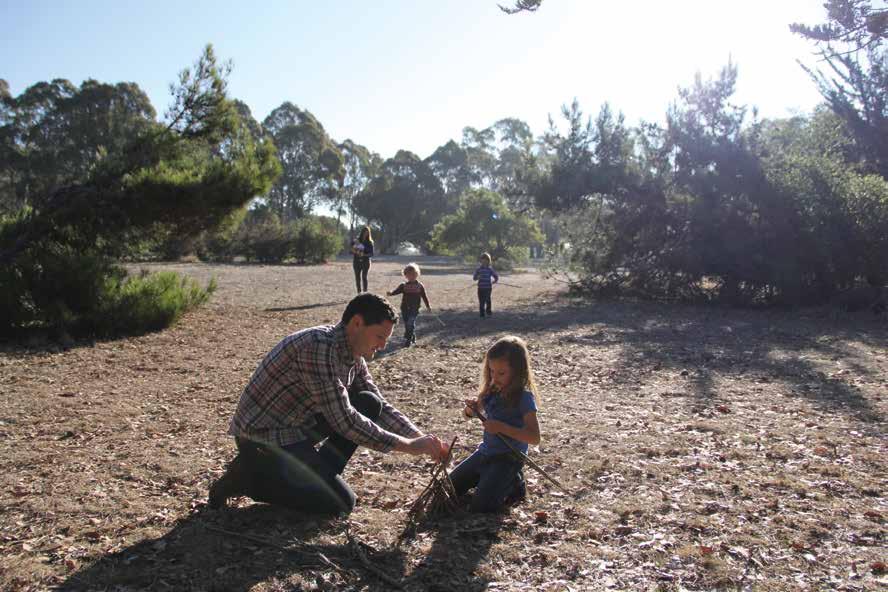
Have some comments or feedback about something you’ve read here? Or, do you have something on your mind that you think everyone should know about? Let us know! To have your letter to the editor considered for publication in the “In Box” section, please email it to info@slolifemagazine.com. Be sure to include your full name and city. And, it’s best to keep it to 250 words or less.

Our advertisers get great results and we would like to tell you about it, but first we want to know about you and the objectives of your business. Call us at (805) 543-8600 to talk with our publisher, Tom, about different advertising programs—we have something for every sized budget. Or, you can log on to slolifemagazine.com/advertise and we can send you a complete media kit and loads of testimonials from happy advertisers.
4251 S. HIGUERA STREET, SUITE 800 SAN LUIS OBISPO, CA 93401
SLOLIFEMAGAZINE.COM info@slolifemagazine.com (805) 543-8600 • (805) 456-1677 fax
PUBLISHER
Tom Franciskovich
CREATIVE DIRECTOR
Sheryl Disher

Jeanette Trompeter
Paden Hughes
Dawn Janke
Jessie Rivas
Chris Bersbach
Tim Tapscott
Spencer Sarson
CONTRIBUTIONS
Submit your story ideas, events, recipes and announcements by visiting us online at slolifemagazine.com

Contributions chosen for publication may be edited for clarity and space limitations.
If you would like to advertise, please contact Tom Franciskovich by phone at (805) 543-8600 or by email at tom@slolifemagazine.com
So many of the stories we publish come from our readers’ great leads. We are always looking for interesting homes to profile (see “Dwelling” on page 38). Know a student who is on the rise? Is there a band we should check out? Something to investigate? Go to slolifemagazine.com and click “Share Your Story.”
The opinions expressed within these pages do not necessarily reflect those of SLO LIFE Magazine. No part of this publication may be reproduced in whole or in part without the expressed written permission of the publisher.
Complete details regarding circulation, coverage and advertising rates, space, sizes and similar information are available to prospective advertisers. Please call or email for a media kit.
Closing date is 30 days before date of issue.
live the SLO Life all year long? It’s quick and easy! Just log on to slolifemagazine.com/subscribe. It’s just $24.95 for the year. And don’t forget to set your friends and family up with a subscription, too. It’s the gift that keeps on giving!
LETTERS TO THE EDITOR
info@slolifemagazine.com
4251 S. Higuera Street, Suite 800 San Luis Obispo, CA 93401
Letters chosen for publication may be edited for clarity and space limitations.





Elder Placements guides you through the difficult decision making process. After our evaluation, we take you to tour the appropriate facility that will give your parent the care and quality of life they deserve.



Sincere thanks to Tom Franciskovich for his article, “What we have here is a failure to communicate.” —KATHY APROBERTS


ike many San Luis Obispo residents, I felt a huge amount of pride for Cal Poly’s historic appearance in the NCCA basketball tournament last month. As I was driving to a meeting on the day of their game against Wichita State, I tuned into AM radio to catch part of the action. The first half had just ended with the top-ranked
Shockers up 32-13 over the Mustangs, and the broadcaster filled the airtime by interviewing Cal Poly athletic director Don Oberhelman. The broadcaster was amused by how the national sports media had such limited knowledge and understanding about the university—many had never heard of it, or confused it with Cal Poly Pomona— so he asked the athletic director about it. Oberhelman then said, “We want to take
BY TOM FRANCISKOVICHCal Poly… Cal Poly Pomona is Cal Poly Pomona… but we’re just Cal Poly, and that’s what we want to be known as.” My feelings of goodwill for the basketball team rattled out of the rim like the Mustangs’ jump shots that day. “How in the world do you take San Luis Obispo out of Cal Poly?” I thought to myself as I turned off the radio…
Loved your article Failure to Communicate in the Apr/May issue of SLO LIFE I knew they had a lot of land but didn’t realize it was 9,678 acres, yet they are proposing to build their dorms on Slack and Grand Avenue. It will be like WOW Week every night with freshman walking up and down Grand Avenue at all hours. Sure something to look forward to isn’t it?!
love the woman who said this is not a college town - this a town with a college in it. How true.
great article.
In your article Failure to Communicate about the controversy over the proposed location of new dorms at Cal Poly, you say that “It is time to get serious about this issue....” Well that needs to start with you educating yourself.
In the article you cavalierly suggest that the new dorms could be located on “... the vast swaths of land now used mostly for agriculture near the Highland Drive entrance” to campus. You make it sound as if the agricultural uses of these lands are no more important than the parking lot uses of land that you mention elsewhere in your article. This land along Highway 1 and Highland Ave. is Cal Poly’s only prime (class 1) agriculture land, and is used as laboratories for classes that fulfill part of Cal Poly’s core mission. Cal Poly does have a great deal of land, but most of it is rolling rangeland, and not prime cropping land.
Building on this land as you suggest would seriously hamper our ability to teach our classes, and so decrease the quality of our agriculture programs. This is what has happened in Silicon Valley and elsewhere in California: Some of the best farmland in the state has been built on, and so taken out of production forever. Our food has to come from somewhere. We can build elsewhere, and preserve this precious resource.
You have a significant forum, please educate yourself before making suggestions that will be taken up and promoted by uninformed people. This land is not just being used for agriculture, but being used as laboratories to fulfill part of our core mission, and as we see it, as important to Cal Poly as Physics or Chemistry laboratories.
 —DAVID W. HANNINGS Professor Emeritus Horticulture and Crop Science Department Cal Poly
—DAVID W. HANNINGS Professor Emeritus Horticulture and Crop Science Department Cal Poly
As I prepare for traveling to Long Beach for the CSU Board of Trustees meeting, I am re-reading some of your articles I have saved in recent months. You have personalized the challenges we face with your writer’s own experiences. But especially moving was the family not being able to move in because they couldn’t compete with students. A house in our neighborhood recently sold, and the flyer reported “present rental income of $4,600 a month”! It sold very quickly.
My Dad accepted a teaching position at Cal Poly in 1946. He came out of Iowa State University, had never been to California and was sold on the basis of a picture they sent showing the surrounding hills. (It should be noted that he had multiple other opportunities based on an education in electronics and electrical engineering.) So I was born here, and grew up when SLO was REALLY slow. My first home was on the side of the mountain under the “P” back when there was faculty housing. Dad eventually built a house on Henderson, doing all of the work himself. We took care of Dad when he was dying of Parkinson’s disease and moved back into the neighborhood when we retired. The owner vs. rental occupancy percentage continues to shift and we have more and more large groups of campus-housed students roaming the streets looking for parties. The noise, acts of vandalism and indecency, drunk and injured students collapsing in yards—the list goes on. We are going to speak at the Trustee meetings. I don’t expect them to change their minds, but at least our voices will be heard. Thanks for listening! You “get it” and so many others do not.
The article by Tom Franciskovich, Failure to Communicate, is the voice of wisdom that would work if we were dealing with a level playing field, but unfortunately, we are not. We have to remember that all public schools, be it Cal Poly, Cuesta College or the School District, answer to the State or the County, not to the City, and this gives them an enormous edge over us, so they don’t listen to the community. Skewed equality always promotes abuse. Therefore it is up to the community to find ways to protect itself. For this, the City needs to be a great deal more assertive and more creative than it has been for the last thirty years.

Let us not forget that San Luis Obispo was not built around Cal Poly. On the contrary, Cal Poly was a small obscure school that took advantage of what the City had to offer in order to grow and become a university. Because they did not provide enough housing for their students, they (as well as Cuesta College— don’t forget it) took over more and more of our housing stock to the point that less than 38% is now in the hands of resident owners. In the north part of town, it often drops to 25%, and rents for the 75% are ridiculously inflated. How can a city like this attract new families?
Something must be done if we care about SLO, therefore I suggest that we look at other college towns who have successfully managed to control the invasion of students into their neighborhoods. Berkeley has created huge parking permit districts that they strictly enforce; East Lansing, Michigan, forbids parking on any street from 2 am to 6 am, and even denies the authorization of new rentals in areas where neighbors desire restrictions. Loading zones have also been placed where any school comes in direct contact with a neighborhood. We need to implement similar measures that will protect our resident homeowners.
As for rowdy Cal Poly and Cuesta students, if the SLOPD enforced its own rules and gave citations when they receive phone calls from irate neighbors, the rowdiness would soon come to an end. Unfortunately, year after year, less than 15% of the complaints result in citations.
—ODILE AYRAL, PH.D. Professor Emeritus Cal PolyTwo weeks after the article Failure to Communicate published, former San Luis Obispo Mayor Ken Schwartz presented a petition signed by 28 past mayors and council members to the city council asking them to improve its communications with Cal Poly regarding future student housing. And, in a speech on May 2nd where he outlined his vision for year 2022, Jeffrey Armstrong, president of Cal Poly, said that in addition to raising the four year graduation rate to 75% (it currently stands at 31%), he committed, “To increase collaboration, we pledge to meet with the city and county on an annual basis, and informally more often, to share our plans, our ideas, for facilities, for growth, as we move together.”
The Q&A article in the April/May issue appears to be a tacit endorsement of Mr. Dow as your District Attorney candidate of choice. Perhaps it should have appeared under the heading “Political Advertisement.” While fully recognizing your right to print whatever you wish, a sense of equity on your part should have prompted a similar, facing page featuring Mr. Covello. Our county is fortunate to have two candidates for this office that appear to be well-qualified but that have different managerial styles. Both deserve careful consideration by the electorate. Your bias does not advance this process.
So,Dan,how did you get your start? I joined the Army and they said,“We need linguists ight now and we think based on your cores you’d be good at learning languages.We want you to be an ntelligence Cryptological Linguist and we’re going to teach you a foreign language.”So, after getting my security clearance stuff done, they sent me to the Defense Language Institute in Monterey.They said,“We’re going to assign you Category 4 language,”which happened to be Korean. I was there for a year. It was studying eight hours day.The language is fascinating, but I never, as a youngster, would have said, Hey, want to go learn Korean.”I just wasn’t exposed to it. But because of the Army, it opened up a whole new set of life experiences and it was very rewarding. What do you remember about your time in Korea? grew up in Maine—Korea was like Maine, probably even colder though—quite bit colder, but an absolutely beautiful country.The elderly people, particularly way out in the villages where they stil remember the Korean War, would treat you so well being an American soldier. remember one time when we broke down in th middle of an extremely cold winter night.The trailer that we were pulling behind our truck had the wheels lock up; they were literally frozen shut So, we found a discarded tin can on the side of the road and filled it with diesel fuel. Our idea was to light it on fire and place it underneath he axle, thinking it might warm it up enough to unfreeze so we could then start roll again. It took forever, bu we finally got it lit. My partner then stood up quickly and slipped on some ic and the flaming diesel fuel went flying out of his hand and landed in the rice addy next to the road. So we’re jumping around in the field trying to tamp it out when this elderly woman—it mus have been about 3 o’clock in the morning at this point—comes out of his little house wearing only nightgown; it was probably 15 or 20 degrees below zero. She brought us a hot pot of coffee and proceeded to thank us for our ervice. Here we were practically setting her crop on fire and she’s making us coffee and thanking us. When were you first exposed to the criminal justice system? was 32 and in my econd year of law school when received 24-hour notice that I was being deployed again.They told me initially that I was going to Iraq; but the Army said,“No, we’re actually going to send you to Kosovo.” was on a human intelligence team.We were responsible for finding war criminals, looking out for people that had been previously identified and had never been brought to justice. So we were looking for them, actively going out into the communities, talking
and make sure that their rights are protected; and make sure that the process goes forward and you achieve just outcome.And lot of prosecutors don’t really care for those cases because they’re complicated.And when say complicated,it’s because they have so many different competing dynamics.If you think about it, victim of an intimate partner crime is often so emotionally tied to the perpetrator that they have a hard time separating themselves from the abuser.You’re dealing with people at a very critical time of need in their lives. But,your work in this area was interrupted a few years back, correct? Yes, if somebody is in the National Guard or the Reserves, and they get called up, you’re subject to a Federal Order. So, in 2010 I had orders from the President of the United States that id,“Captain Daniel Dow, you’re being ordered and called to active duty and you have to drop everything else you’re doing and go off to war.”It was tough year for my family. My daughter, Chloe, was five years old, nd my son, Jed, was three.We did lot of Skype, and missed them like crazy. My
I am writing to let you know that I read your Q&A article regarding Dan Dow. I am hoping and expecting that you will be giving equal coverage to the other candidate for District Attorney, Tim Covello.

I look forward to seeing the article.
—JOAN BELOI was quite disappointed to open my SLO Life Magazine today to see the Q&A section on page 22. I turned the page in search of the other candidate’s Q&A page, only to find that it was not there. As you know, there are two candidates for this position. Tim Covello has lived and worked in the DA’s office in this community for over 20 years.
The Q&A section is a wonderful way to highlight interesting community people, but it should not be used as a vehicle to provide free advertising for a candidate in a hotly contested race. SLO Life Magazine basically gave free advertising for only one of the candidates for DA and gave the appearance of endorsing one candidate over the other.

Tim Covello needs to be provided equal opportunity to be heard. If you already have plans to highlight Mr. Covello in your next magazine, I apologize. If not you need to do so.
SLO Magazine needs to do the right thing here.
—DAWN TURNERAlthough it may have appeared differently, we do not have a position on the District Attorney’s race, other than to be thankful that San Luis Obispo County has two incredibly talented, capable candidates appearing on the ballot. We had intended to give equal time to Tim Covello and did invite him to appear in the Q&A feature of this issue, but he declined our invitation citing a concern that it may not be delivered to all of our readers in time to help his campaign. Going forward, we will be sure to publish a side-by-side candidates forum as we have done in the past in order to avoid such timing issues.
Please send your comments to info@slolifemagazine.com
Follow SLO LIFE on Facebook: Visit facebook.com/slolifemagazine Visit us online at slolifemagazine.com
Letters may be edited for content and clarity. To be considered for publication your letter must include your name, city, state, phone number or email address (for authentication purposes).
A few days before he graduated from Cal Poly in 2011, Tim Tapscott talked one of his photography friends into joining him in shooting the last scenes he would capture during his time living in San Luis Obispo. Grad school in Colorado would have to wait until the pair made a trip to the boarded-up building on the hill. He had been interested in the history of the place, fascinated by the rumors.
The facility opened as an orphanage in the 1920’s, and eventually became a tuberculosis unit for the old general hospital, and finally ended as a juvenile detention facility called Sunny Acres. Rumors abound concerning

what has been going on there since its official closure. Recently, Transitions Mental Health Association (TMHA) purchased the property and expects to renovate it for its fourth act: permanent housing for those struggling with mental illness. Although it expects the process to take between five and eight years, TMHA envisions 35 studio apartments for its clients.
But, on that chilly “pitch black” night in early June, Tapscott and his friend lugged their equipment up the hill to set up for a long, 30-second exposure. “I really couldn’t see the building at all,” recalls Tapscott, “I was more guessing where it was.” At around 10 o’clock,
Tapscott set up his camera on the tripod and tripped the shutter for the long exposure.
Although the young photographer customarily prepares extensively for a shoot, he admits that very little forethought was put into this one. And, with the exception of the sepia filter that was added in Photoshop, very little retouching was done after the fact. Describing the scene as “very eerie,” Tapscott remembers the sounds he heard coming from the building that night… “something banging around, faintly.”
The image that you see here is his last known photograph during his time in San Luis Obispo.

Against the backdrop of a quickly dwindling water basin, the California State Office of Legislative Council ruled that the proposed Paso Robles water district is constitutional. Following the decision, Assemblyman Katcho Achadjian vowed to move forward with his legislation, AB 2453, which would create a board of directors comprised of both property owners and directly elected residents in the district.
60% of the property owners in Arroyo Grande, Grover Beach, and Oceano rejected the Five Cities Fire Authority (FCFA) request for a $66 per year property tax hike. The FCFA, which formed in 2010, had seen its budget rise from $3.4 million to $4.3 million over the last two years. In 2012, the FCFA had received a FEMA grant and used the one-time funds to hire six new firefighters. The funds expire later this year leaving the agency in financial limbo.


In front of one of the largest crowds to ever attend a meeting, SLO City Council, by a 4-to-1 vote, decided to not ban marijuana dispensaries or restrict outdoor growing. Councilman John Ashbaugh said at the meeting attended almost entirely by opponents to the legislation, “The only way I would pass this is if I had too many hits on the bong.” The issue came to a head after the City had received multiple complaints from neighbors of a downtown resident who was growing a dozen six-foot tall marijuana plants in his backyard.

Pismo Beach City Council settled a lawsuit brought on by Madison, Wisconsin-based group Freedom from Religion in conjunction with a member of Atheists United San Luis Obispo by agreeing to no longer begin its meetings with a prayer, eliminate the volunteer city chaplain position, and pay the plaintiff’s attorney fees totaling $47,500. A few weeks later, the U.S. Supreme Court ruled 5-to-4 in a separate but similar case that the town of Greece, New York was allowed to continue to start its council sessions with a prayer.

The City of San Luis Obispo installed seven parking meter-like donation stations downtown which accept cash and credit card donations for homeless services. Contributions to the machines go directly to The Prado Day Center. The innovative “Change for Change” program had been in the works through a coordinated effort between the City, SLOPD, and the Downtown Association for more than a year.

The Community Action Partnership of San Luis Obispo County (CAPSLO) announced that it partnered with the SLO Regional Transit Authority to jointly purchase 9.7 acres at 40 Prado Road near Highway 101 to build its long-sought homeless services center. Construction on the overnight facility is expected to begin late next year and will replace both the Prado Day Center as well as the Maxine Lewis Memorial Shelter. The following day, CAPSLO made more news by announcing that it is transitioning to a sobriety-based program and will no longer serve drug and alcohol addicted clients.

The California State University Board of Trustees approved Cal Poly’s plan to build the controversial 1,475-bed, seven building student housing complex on the south side of campus near a neighborhood at the intersection of Grand Avenue and Slack Street. Building is expected to begin at the end of next year and should be ready for the 2018/2019 school year.
Citing alcohol-fueled disturbances at Cal Poly graduation ceremonies in past years, Mayor Jan Marx and Cal Poly Vice President for Student Affairs Keith Humphrey sent a letter to the Downtown Association asking that they assist in urging bars to end the practice of opening at 6am on graduation day. The bar owners politely, but firmly declined the request, stating that they will continue to open early for students on those days.

Former Atascadero Citizen of the Year, Kelly Gearhart, pled guilty to fraud in a Los Angeles federal courthouse in connection to his real estate development activities. The 53-year-old, who had been living in a commercial building in Ohio, scammed Central Coast investors out of $20 million. His conviction carries a minimum of 11 years in federal prison, but Gearhart will learn the actual length of time he will be required to serve when he is formally sentenced on December 29th.


More high-temperature records are broken around the Central Coast as heat waves bake the drought-stricken landscape twice in the month of May. Los Osos, which is often covered in fog during that period, hits 103 degrees on May 14th, Morro Bay registers 102, and Cambria checks in at 100.

Just over a year ago Monica Grant was installed as the new CEO at the YMCA of San Luis Obispo County. We caught up with her recently to ask her about how she went from a musican-comic to the chief executive...

You spent eight years at the YMCA in Honolulu. How does it compare? There are many aspects of living here that remind me of my time in Hawaii. There are a lot of parallels. There’s that experience of people coming in from the mainland and crashing and burning, or wanting to come in and change the place because they think that no one knows what they are doing. So having been there, and Hawaii’s a very complex place, I really had to raise my social IQ to be successful there. You have to come in and be able to assess pretty quickly. Just like any small, tight-knit community where there is a lot of history, you get sized-up before people will jump on board. They want to see that you are going to stick around; they want to see where your heart is; and what your motivations are. They want to see where you’re coming from; what are your ethics? Are you here for yourself, or are you here to really help and be a partner?
Is this the job you always wanted? Actually, I wanted to be an artist. I was a musician-comic. Basically, I was a bad folk singer and probably not much better as a comedian. It was during the eighties when I had sort of a two-track career. I was working at the Y during the day and performing on nights and weekends. I did three albums on my own label and toured pretty extensively. It was such an incredible experience. When I hit 40, I sort of saw the writing on the wall. I decided to hang it up and really focus on my non-profit career. I never thought I would be a CEO—I call myself an “accidental CEO.” One day the CEO at the Honolulu Y said to me, “It would really please me if you ever thought about becoming a CEO.” That really stuck in my brain like, “What are you nuts?” But, then I started a masters program in organizational leadership. And one day I said to myself, “Why aren’t I doing this?” If I really think about what I am passionate about, it’s about helping organizations become better. I love the Y, so why am I not doing it instead of just studying it? Why don’t I actually be a leader myself?
Tell us about your spouse, Colleen. How did you meet? I was living in Sonoma County at the time, struggling as an artist, struggling to make ends meet working in a non-profit. I had a couple of friends who were property owners; they were very smart about real estate. They kept telling me, “You have to own real estate.” I figured I would be a lifelong renter, but they motivated me and inspired

me. I found a realtor—Colleen—and she helped me find a house. After escrow closed I invited her to do some volunteer work with me, and the rest is history. That was 14 years ago now. I like to say that I got the realtor with the house. We had a marriage ceremony a couple of years after we met—we’re not legally married yet, but hope to do that this year— we had all of our family there, about a 100 people, and our moms walked us down the isle. It was very cool. I feel very lucky.
And what about your family? Having parents who were immigrants definitely shaped me. My mom is German, she lived in Germany through the war, and my dad was Czech. I certainly was not alone on Long Island where I grew up. There were many immigrant families like that there. My parents had a real appreciation for what was here in this country. There was a gratefulness. They would get very upset, very offended, if someone spoke negatively about the United States because they knew what we had here. And they had a very strong work ethic. They both had very challenging situations during the war for different reasons. I think they developed a certain fortitude also—you didn’t quit just because things were hard. That sort of perseverance certainly has come in handy for me over the years.
How was your childhood different—are kids too plugged in today? My take is that kids are kids. Times change, families change. Circumstances change. Many peoples’ circumstances changed dramatically during the recession. Technology or no technology, that’s just the reality. I know that kids are very adaptable. What I have found to be true is that there is something to meeting a kid where they live. Technology is a mechanism and platform for that, but fundamentally it’s still about connecting with each other. We have a program where kids use technology to learn how to make films and do graphic design; it’s awesome. And it’s a form of expression through technology. I believe that kids are not just leaders down the road, they’re leaders today. And we see kids doing incredible things at younger and younger ages that are very socially responsible. There is a real global awareness. Kids today are much more savvy about the fact that we’re a global village. I think that’s the plus side of technology. I feel very optimistic and positive about the upcoming generations.

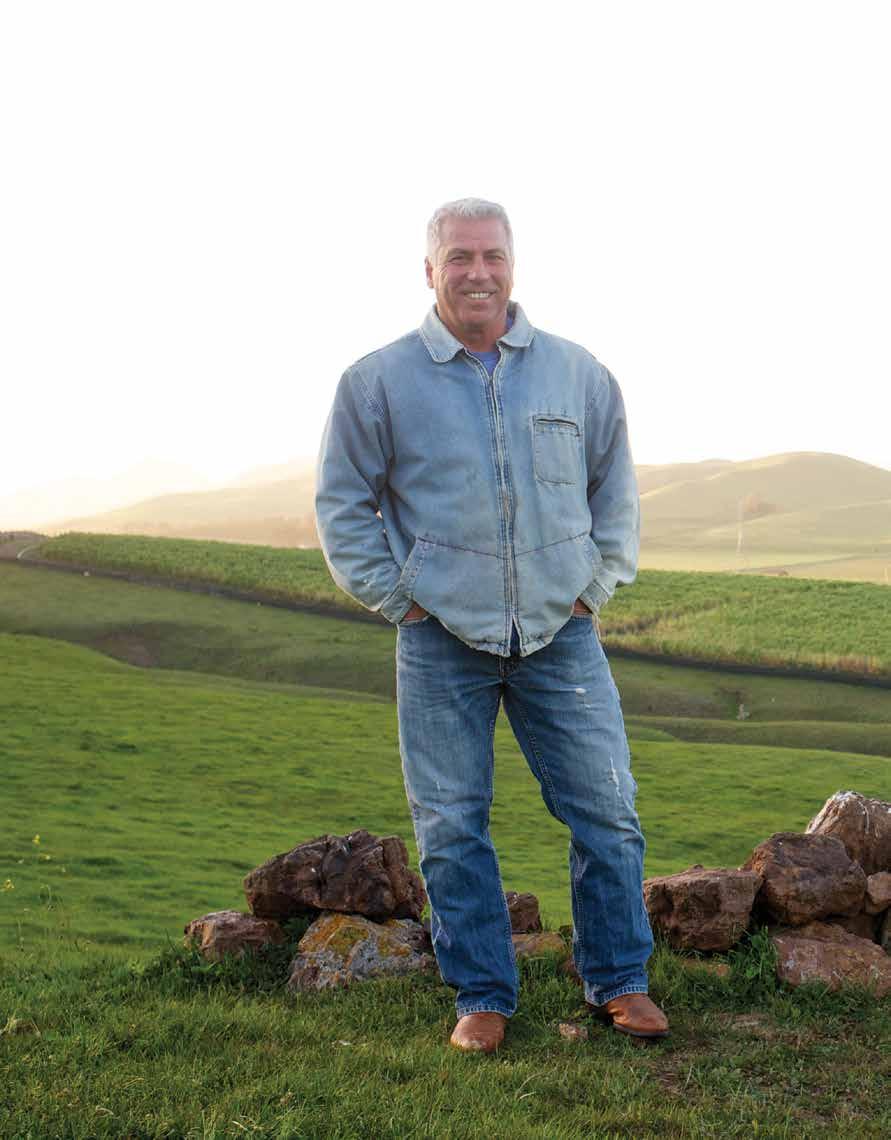
A few years ago, BILL OSTRANDER experienced a life-changing “visceral response” to a Supreme Court decision. It was the Citizens United v. Federal Election Commission ruling that led him down a path founding the Citizens’ Congress. After a diverse career that included acting, philanthropy, farming, and construction, he now spends his time focused on one issue: campaign finance reform. And, as the director of the non-partisan group, he recently hosted the first national assembly of the congress at The Cliffs Resort for a three-day conference. He lives in San Luis Obispo with his sons, who are 14 and 17-yearsold, where, in addition to taking on the status quo, he grows hay and raises cattle. Here is his story…
 PHOTOGRAPHY
PHOTOGRAPHY
Let’s start from the beginning, Bill. Where are you from?
I grew up in the Midwest and we had a family farm, but my father went back to school. I was very proud of my dad. He graduated top of his class—numero uno—and he became an electrical engineer. I continued to work on the family farm and so forth; and then when I left home, I went to Hollywood.
Did
No, I’d probably seen like six movies in my life before I left Indiana. I never really did theatre or anything like that. It was just—the Midwest was not a good fit for me. It’s rather sterile, creatively. I just didn’t fit there. It didn’t feel good. I don’t know exactly what motivated me. I could talk about psychological, subconscious motivations. I think that it was—it was really trying to reinvent myself. It just was a very uncomfortable fit for me, so I left right after high school.
You were having some success—why not stick with it?
I just got to a place where I felt like it was stunting my growth as a human being. Sitting around, waiting for the phone to ring was just not my idea of being engaged. So, I read a book called “Cry of the Kalahari,” which was written by a couple of people that went to the Kalahari Desert in Southern Africa to study how lions survived for ten months out of the year without water. I was motivated by their book and I thought, “These people are engaged every single day, and that’s what I want.” I’ve always eschewed security and comfort in favor of adventure and passion. I decided that I was going to Africa and I saved money for a while—a couple years, actually. I ended up in the Northwest corner of Namibia, what they call Damaraland, where there are approximately 130 black rhinos that still roam. They are more or less the last free-ranging population of rhinos in the world. There’s always a threat of poaching, so I joined up with a small
Did you just hop a bus to Los Angeles
I moved there indirectly. I actually went up to Seattle first because, in sort of keeping with a repressive attitude the Midwest can have on individuality and creativity and stuff like that, it would have been rather arrogant to go straight there. There was a certain conceit in saying, “Yeah, I’m going to go to Hollywood and be in the movies.” There’s a conceit to that that I just wasn’t really ready to face, so I went to Seattle in an indirect route to Hollywood and I stayed there for about six months. I sold clothes and drove a bulldozer. I got a job at a high-end suit shop. The owner there asked me what I wanted to do with my life and I said, “I want to be an actor.” He said, “Well then what are you doing here? You need to be down in Los Angeles where you’re actually going to classes and you’re in the environment—that’s what you should do.” So, I saved a few bucks—I had $150 and a beat-up old Pinto, and I drove down to Los Angeles. The week after I arrived, I managed to get a movie. Basically, I was a glorified extra, but I did have my own speaking line. It was a film starring Joey Travolta. That was my start and I worked for about ten years in movies. A lot of people know a film that I did called “Christine.” Remember the movie about the car—the Stephen King novel? I played the part of the bad guy. I did a number of projects, and then I started to write and direct. I wrote and directed a few things—small things.
organization who was going to be sending a volunteer out there to help them in their efforts to protect the black rhino.
When I got there, I realized that none of the jobs assigned to me were relevant. After about a week there, I said, “Look, I really want to get out there and do something to help.” The people at the organization said, “We just spent two hours trying to figure out how we were going to use you.” I was like, “Two hours? I spent two years of my life saving money preparing to come here. You took two hours to figure out what to do with me?” I was so mad, but it’s like, what can you do? So, these two ladies said, “Okay,” and took me in a little bakkie—which is African for small truck—about 450 kilometers away to a place called Twyfelfontein, which means “fountain of indecision,” or “doubtful fountain.” I was dropped off there along a dry riverbed with a month’s worth of food and a sleeping bag. No telephone, no radio, no bicycle, no car, no people. There was a spigot for water and shower facility, and a long drop, and that was it. The flies were dive-bombing my eyes—as only African flies can do—and these people got back in their truck and drove away. I was supposed to do community development. It was a very dark time for me. I thought, “What the hell did I just get myself into?”
So, there you are doing good work in Africa…


Finally—I don’t remember how long I’d been there, maybe a few weeks—this Damaraland man came by in his old Jeep. He was a wonderful guy who spoke English, African, German, and Quaqua. He was in this sort of khaki outfit. I said to him, “Helius, I was told when I was coming here that there were these jobs for me, and clearly none of those jobs are things that I can do that would be of any help to the rhinos.” I basically just turned to him and said, “How can I help you?” I was very, very sad. I was like, “What am I doing? What’s happening here?” I was very humble and he turned to me and he just looked at me and said, “First of all, welcome to Namibia. You are my brother.” Then we started to talk, and with him I began to understand the Damaraland culture. So, I traveled around with him doing what I could to help the people I met there.
But, now you’re here. What brought you back?
Well, I met a woman in South Africa, and I married her. She had a child, and so I asked her, “Do you want to go to the United States, or stay in Africa?” She said, “United States,” and I said, “Okay.” So, all of sudden, I’ve got a family to support. I really did not want to live in Los Angeles, but I knew I could generate some income there. I had been a self-funded volunteer in Africa and it effectively cost me around $50,000 to go there. But, I didn’t want to raise a family in Los Angeles, and had decided that I wanted to farm again so I contacted a group called FarmLink, which is like a dating service for farmers and aspiring farmers. Essentially, they match older farmers who are looking to retire, yet have no descendants, to younger upstart farmers who don’t have the resources to get going. So I connected with them and I decided to come up to Cal Poly and take a refresher course in dairy science. That’s when I discovered San Luis Obispo. It was a real visceral hit like, “Ah, this is a cool place.” I just felt really good about it, so I told my wife at that time—we’re divorced now—I said, “Gee, I got a great hit from this place. This place is pretty cool.” She had her heart set on a move to Pennsylvania where we’d found a farm. It was a 160-acre farm up on a hill with a 200-year-old farmhouse, a rather bucolic setting. We moved there and it was just an absolute nightmare—absolute nightmare.
Everything that could possibly go wrong went wrong. Just everything went wrong. Our son died—we had a two-and-a-half-year-old son who was killed. He was playing on a pole vault mat while his older brother was at soccer. My sister-in-law was standing very close to him and all these kids were jumping up and down on the mat, and this aberration of a wind gust came along, and it chucked the mat up in the air and threw everybody off of it. My son landed in just such a way on the back of his head that it severed the connection from his brain to his heart and his lungs. He died instantly. Everybody else got up and brushed themselves off, and my son was dead. It was just an absolutely freak accident. If his trajectory would have been just a half a degree off in any direction, or if he’d have been in any different level of his takeoff, he’d be here today, or maybe he’d be paralyzed, but he would be here today. It took me five years to find passion after that. After just failing in Pennsylvania and just not being—it all, it just was the completely wrong area to be in; we just didn’t feel good about it. I came back to Los Angeles to do some work to try to get some >>
resources again. I tried reminding my wife that I thought San Luis Obispo was a really good place and we ought to go up and take a look. We came up here and managed to borrow some money to buy a house.
No, I continued to work in Los Angeles. I drove back and forth quite a bit and also worked for people in the entertainment industry— building houses and stuff. I started to do really well in construction and began buying real estate and farm ground and started reinvesting in agriculture and other real estate projects. It got to a point where I could leave Los Angeles behind. But, some things weren’t working out for me emotionally; and then the recession happened, and I just decided it was time for me to rethink where I was going—a midlife crisis in a good way, I think. We had a big project up in Paso Robles that we were in the midst of and, all of the sudden, the bottom fell out of the economy. We just didn’t have any options. The banks wouldn’t renegotiate loans, and the recession lasted much longer than we thought. It was a lot of things like that, and then we went through a very tough divorce, but finally came out okay on the other side. I’ve been farming for the last few years; it wasn’t meant to be my vocation, it was more meant to be an avocation. It is very difficult to make a living off of farming at all, anywhere, but particularly here as sort of a start-up, but I’ve done all right. I don’t know that this as my highest and best use forever, but it was the right thing to do at the time.
Was your “highest and best use” found in the ashes of the imploded economy?
Well, in many respects, every tree and bush you pass on these roads are part of your journey. I wouldn’t say that the recession portion of it necessarily was a provoking experience, but I have to think that, in part, because of it, it made me more aware of other things. The last five years have been pretty tough times, but the real catalyst for me started in 2010 with the visceral response that I got from the Citizens United Supreme Court decision. The ruling basically stated that corporations were allowed to use general treasury funds for election communications. They regarded them as independent expenditures, meaning that they are not supposed to be coordinated with the campaign or the candidate themselves. Of course, that’s a complete farce. The Supreme Court essentially ruled that money was equal to free speech.
So, what is your prescription for fixing this?
Well, there’s a complex answer to that question, because it is not any single one thing, there’s a plural approach. When a bill comes about— let’s say one of the more sweeping bills that we’ve had in the last decade—the Dodd-Frank Financial Regulations bill. More than 3,000 lobbyists were hired by the banking industry to go in and try to water down that bill, or try their best to kill it, which they knew they couldn’t do because it was so popular with people during the Wall Street crash that they knew they couldn’t stop it. So, what they wanted to do was shape it. When you have 535 legislators—435 in the House and 100 in the Senate—and they have appointments about every 15 minutes with the lobbyists coming into their office. Now you’ve got six lobbyists—six lobbyists for every representative in Washington, coming in and saying, “Alright, now hold on now, let’s talk about this. You’re going to ruin the economy. You’re going to ruin the financial sector. You’re going to do
this; you’re going to do that; this is going to be bad for the American people.” They hammer them like that, and hammer them, and hammer them. Eventually, these representatives, many of them are very intelligent people, many of them are very sincere people, and so forth; but they can’t know everything about everything. They have to depend on other people to get their information.
A representative has 760,000 constituents, approximately; so if you and I write a letter, where does it go? It goes to an intern who is working for free. He goes through and opens the mail and then sends a reply like, “Okay, and here’s your response. Thank you.” Why that’s a critical thing to understand is that the Congressional Research Service documents that the average legislator spends about 60 percent of their time fundraising. Three out of five workdays are spent fundraising. If they’re spending 60 percent of their day talking to people who they have to get money from—and most people cannot write the kind of checks that they need—it’s a very, very, very small percent of the population. They end up basically being an audience for—60 percent of the time—the people whose interest don’t necessarily align with the other 99.9 percent. Then there’s the issue of lobbying itself. The average person that works on Capitol Hill, when they leave the Capitol and go work for a lobbying firm, their salary goes up 1,400 percent. Our government has become more and more involved in personal policy for rich men, whereas we should think of our public servants as representing our highest ethical standards. What’s happened, though, is it’s become a portal for personal enrichment for people.
I think a lot of people would agree with you, but what can you do about it?
There was a group of us that started trying to pass a resolution in our community, which we did in September of 2012 in the City of San Luis Obispo, to get our city to instruct our federal representatives to craft some sort of legislation to give the power back to the legislatures by regulating money in elections. What we found was that once we talked to all the supervisors; we’d talked to all the city council members; we’d talked to every representative in the area that we could find, more or less; we found that we were just pushing rope around. It was just frustrating. We were doing all the things we were supposed to do in the typical system of little soldiers on the big battlefield having a movement, or passing some sort of legislation that required a massive amount of public participation, because this is being fought against some major, vested interests. So our group had a meeting and I said, “In my opinion, we have three choices. One is to continue to behave as we’ve been, as little foot soldiers, and having our meetings, and blah, blah, blah, blah, blah—continuing to talk locally, but really not having a very profound effect. Two, we could look into supporting a candidate who would run on these issues and create a platform and sort of make it part of the dialogue. Or three, we could create an organization to facilitate a national conversation on this issue.” So we formed the Citizens’ Congress, and we’re talking to people in Washington where these decisions are being made. It’s the same amount of energy that we were putting in locally, but at the end of the day, we’re going straight to the top. It’s kind of like sitting at a stoplight—you’re trying to go, but you’ve got all these cars ahead of you. But this issue just cannot wait any longer, so we decided to go to the front of the line.



As a seventeen-year-old Mission College Preparatory High School co-valedictorian and one of five children, Gregory Conti has spent his high school career involved in gymnastics, campus ministry, as well as playing music.

Tell us about some of your achievments. Commended Scholar, AP Scholar with Distinction, Level 9 Gymnast with eight years of competition experience, and Kairos (Senior Retreat) Student Leader.
What is your favorite memory of all time? hours of sleep in one stretch.
What career do you see yourself in someday and why? research and development, because I enjoy math and science more than any other subjects and desire to use my talents to build something tangible and improve the livelihood of those around me.
What is important to you outside of high school? faith, and gymnastics teammates because they have made me strive to be as responsible, selfless, committed, and good-humored as possible. Who has influenced you the most? example of love and complete self-sacrifice that I aspire to emulate.
If you won $1 million, what would you do with it? education, and then I would use the rest to start a scholarship fund in my parents’ name to honor the sacrifices they have made for my education, and so that other students would not be discouraged by the price of a solid college education.
What is it that you look forward to most? knowledge is power, and power gives the opportunity for improvement.
What do you dislike the most? they can’t or won’t look at an issue from any other perspective.
Where are you headed next? to study chemical engineering. I’ve heard they have something called seasons in Indiana.
Know a student on the rise? Introduce us at slolifemagazine.com /share




As an eighteen-year-old Mission College Preparatory High School co-valedictorian and one of four children, Tristram is driven by his interest in astronomy, space, flight, and technology.
Tell us about some of your achievements. I’ve been given the Mission Prep department awards in Spanish, Social Studies, Science and Math. I am an AP Scholar with honors as well as a lifetime member of the California Scholarship Federation. My robotics team won the engineering award at Marine Advanced Techology Education (MATE) robotics regional my sophomore year, and 4th place overall this year.
Where have your interests led you? An interest in engineering led me to join the VEX and MATE robotics clubs at my school. The challenge in VEX is to build robots for competition. MATE also has task-specific competitions, but is conducted underwater. I served as chief electrical engineer for MATE and president of VEX for my sophomore and junior years, and as an advisor my senior year. These duties gave me the opportunity to set up electrical control systems and learn organizational skills and teamwork.
What is important to you outside of high school? I am an amateur astronomer and use an eight-inch Dobsonian Orion GoTo telescope. Although at this point visual astronomy is my main interest, I have also done some basic imaging using a CCD camera.
What has influenced you the most? I grew up in a household with three older brothers and my dad had a workshop with a lot of machine tools. There was always a project in progress with something being constructed or deconstructed, and occasionally blown up. My family emphasized learning, and we were all expected to set goals for ourselves, achieve them and do our best.
What’s something most people don’t know about you? I was born and lived in rural Idaho until I was 15 years old. I have done a fair amount of self-learning at home, including mastering the basic skills of computer aided design and 3D printing. This led to the design and manufacture of a prototype telescope robotic dust cover for which a patent is pending.
What is your favorite memory of all time? We had a tradition in Idaho of setting off really loud fireworks. This could be very creative with three older brothers, and was a lot of fun. SLO LIFE


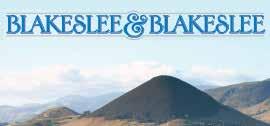



Back when stagecoaches and steam trains were the main modes of transportation, townsites grew up around their stations, and one of them was right along what is now at the intersection of Highway 227 and Price Canyon Road in the Edna Valley.
 BY JEANETTE TROMPETER, KSBY NEWS
BY JEANETTE TROMPETER, KSBY NEWS

Long before there were acres of vineyards and sprawling ranches in Edna Valley, there was a community here known simply as Edna. “Back in the day, this was the town. This was the town of Edna, and everything surrounding it was part of this original townsite,” says Amy Griffith of Sextant Wines.
An old, tin edifice built by John Tognazzini in 1906 now serves as the tasting room for Sextant, but the building once housed the town of Edna’s general mercantile downstairs with a hotel and dance hall upstairs. The bones of the old dance hall stage still exist in what is now office space for the winery. An old farmhouse Tognazzini built in 1908 for his family still stands, as well. Today that farmhouse is a place where travelers can escape to the Central Coast and go back in time. There is also a little cabin on the property that has quite a history. “Oh goodness,” giggles Griffith. “Well, we call it the crib; the children of the Tognazzinis actually slept in there and the parents slept in the back of the general store. But as time moved on, the cabin was taken over by the ladies of the evening,” she explains.

Edna definitely has a history, but who or what
inspired the name of the town is a bit of a mystery. “Edna is kind of elusive,” says Griffith. “Edna may be the woman in a painting in the house, or she could be a racehorse, or she could be someone’s daughter, someone’s mother, a nun. We have no idea actually where that came from.” The most likely eponym is the granddaughter of the original owner of the townsite, Lynford Maxwell, a farmer from Pennsylvania who founded the town in 1894.
Old Edna thrives today largely because it was rediscovered in the 1970’s by a man who loved its history and saw its potential as a hub of activity. It was his daughter, Pattea Torrance, who made it her mission in the late 1990’s to restore the whole place. “This riding wheel was built by my father, ‘The Duke,’ in the 70’s for my mother because she wanted to get away from all these kids she had,” Torrance laughs as she takes me inside a traveling wagon, which looks like something in which gypsies would have traveled from town to town. “My mother needed a little place she could go to write poetry, sing songs, and watch the moon go both up and down. She wanted to get away from it all. My father built this within a day after seeing gypsies down in
Pismo Beach,” she says.
Torrance’s dad was intrigued with artists, musicians, and wanderers. She is intrigued with preserving memories of the past through restoring history’s remnants and giving them new life. There are traces of her story and the area’s past all over the place.
Old Edna today is a resurrection of and a tribute to the heydays of the Wild West and the free-spirited characters who inhabited the valley. While Edna might have been a hub of action at the turn of the 20th century, these days the vibe of Old Edna is all about kicking back and slowing down enough to absorb the magic of the town that helped put this lovely corner of the world on the map. “Those were Edna days then. These are Edna days now,” says Torrance. “It’s a happy place to be.”
Old Edna hosts free, self-guided walking tours. Follow the signs and townsite maps to discover the area’s hidden historical artifacts and treasures.

Jeanette Trompeter, KSBY News anchor and reporter, hosts the “Out and About with JT” series every Tuesday evening at 6pm.






See Próxima Parada live:
June 12 at the Torch Club in Sacramento
June 27 at Claiborne & Churchill Winery in San Luis Obispo

July 4 at Concerts in the Plaza in San Luis Obispo
July 6 at Talley Vineyards in Arroyo Grande
July 31 at Marilyn’s on K in Sacramento
Stream their album at proximaparadamusic.com
Young and dynamic, the Próxima Parada boys are more than the sum of their musical notes. All four band members are Cal Poly graduates who came together in 2012 and made making music their first priority. But they do other stuff too: pianist Nick Larson, a Kinesiology major with minors in Spanish and philosophy, works as a substitute teacher for the county; guitarist Bryson Bailey, also a Kinesiology major, is a scribe in the Emergency Room at Sierra Vista; bassist Kevin Middlekauff majored in biology and now works as an analytical chemist testing water; and drummer Andy Olson graduated with a degree in Graphic Communication and is a freelance graphic designer, but he also worked at Hakuna Matada Bee Company, safely relocating beehives and swarms from local businesses and homes. Larson adds that Olson is an avid climber, and Middlekauff explains that Olson will “climb all the way to love.”
I bet after the success of their indiegogo.com campaign earlier this year, the band felt they did climb all the way to love, especially given the outpouring of community support they received. They created their fundraising campaign back in February and were hoping to raise $15,000 so they could record a full-length album. The community so widely championed them that they ended up raising $18,600. Próxima Parada definitely has a buzz about them.
I first heard the buzz last fall when their show at SLO Brew was announced, and I first encountered their music in early March when the band performed at a Herman Story Wines pick-up party. By that time I was already slated to interview them for this article, and when I heard their bluesy, soulful sound on that sunny day, I was stoked to learn their story and share it with SLO LIFE readers.
I met the band at Speak Studios in San Luis Obispo where we sat down for a chat and some laughs (well, it was less chat and more laughs, actually, and the experience was quite uplifting). One thing I learned was the origin of their band name—I thought it surely had some romantic backstory but discovered that despite being world travelers, they chose the
name “Próxima Parada” after hearing the phrase over and over again on a SLO Transit bus, “La próxima parada is the next stop.”
But for Larson, Bailey, Middlekauff, and Olson, it’s clear there is no stopping. Indeed, the band has come a long way since their first performance at a local donut shop in the Winter of 2012. By Fall 2013 Próxima Parada solidified their roles and teamed up with Vince Cimo at Speak Studios to get serious. Olson says, “Cimo’s equipment helped us identify our sound,” which they define as California Soul Folk.
Bay Area music blogger Brian Gagliardi said this about the band’s sound: “Próxima Parada reminds us all that no turntable or synthesizer can ever strike the same chord in our souls like a live performance that features harmonica, guitar, keyboard, bass, trumpet, and mandolin.” I couldn’t agree more.
Just as they strike chords in our souls, SLO County has struck theirs. All California natives, the band members have called San Luis Obispo home since they began attending Cal Poly about eight years ago, and they’re committed to giving back to the community that has generously supported their music. They’ve performed at a number of events in an effort to support local organizations such as the SLO Food Bank, Transitions Mental Health Association, and The United Way. Most recently, the band took a break from recording to perform at San Luis Obispo’s 12th Annual Walk a Mile in Her Shoes event, an international men’s march to stop rape, sexual assault, and gender violence.
In the 1970’s, Cat Stevens asked us to ride on the peace train; Próxima Parada wants us to join them for a ride too, and with each next stop, they are committed to sharing what they refer to on their website as “Operation Spread-Joy.” To be sure, these four are moving onward and upward, a phrase Larson explains is thematic for the band. With their debut album out in July, Larson, Bailey, Middlekauff, and Olson are climbing all the way to love, and we’re following right behind them. SLO LIFE






Back in 1995, when Steve Carlson was searching for a home to buy, he knew one thing: he wanted a California Spanish-style bungalow from the 1930’s. After a lot of patience and

many dead-end leads, one finally came on the market.
Located on Meinecke Street in San Luis Obispo, Carlson and his wife now observe that it is the neighbors, and not the impossibly hip coved ceilings of the bungalow— something he now calls a “silly prerequisite” of his house quest—that makes their home the refuge it has become.


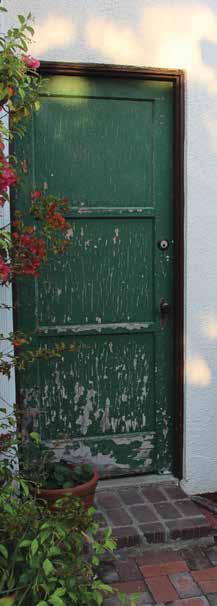
It would have been impossible to forecast almost twenty years ago that Carlson, a native to San Luis Obispo and a Cal Poly graduate, was actually buying into a close-knit community as much as he was acquiring real estate. But today, four relatively small homes—after an addition, the Carlson home is 1,500 square-feet—sitting on relatively small lots have created what amounts to a city park in their collective backyards.
As we wander around and through the properties one afternoon, Carlson launches into a long history of the various people who have come and gone over the years.
One was once a tenant of the place next door who then bought the house on the other side. Another was a younger family who are now empty-nesters. And so on.
It was a “real communal spirit” as Carlson describes it that led the neighbors to declare “let’s just try to keep it as open as possible.” The idea was to enjoy the interaction with each other while also respecting one another’s privacy. The result has been an interesting experimentation in modern backyard living.
One of the great things about living in a small house according to Carlson is that, “it encourages you to get out and make the outside livable and palatable.” Carlson and his wife, Louise, who grew up in New Zealand, did not have a grand plan for their property. Instead, Carlson describes it as an “organic evolution” where the goal was to reuse and salvage as much as they could from the existing yard. On many weekends during the early years, neighbors from all four houses could be found working together outside, discussing ideas, sharing tools, and lending a helping hand. The days were often capped by an evening barbeque with each neighbor bringing a dish to share. Although most of the heavy lifting has long since passed, the outside remains central to the livable-ness of the homes, and on occasion the neighbors still dine together out back.
BEFORE With nary a focal point in site, the landscape was flat, dry, and uninspired.
A practical reason for the liberal planting in their backyards is that the homes are situated on a street that hosts a significant amount of traffic. The road noise has been dampened significantly by design. One of the neighbors makes the centerpiece of his backyard a perpetually running fountain. The water feature drowns out the noise and is easily heard from the neighboring yards.
But, it is the clever use of “small spaces within a small space” that creates interest and intrigue for the visitor. The backyard gardens are all curved and designed to create distinct areas. The Carlsons, for example, have framed out a dining area with carefully manicured boxwood shrubs. >>






AMBIANCE White curtains and three side-by-side full length mirrors, all beneath a pergola, make this intimate outdoor space boil over with hip factor.



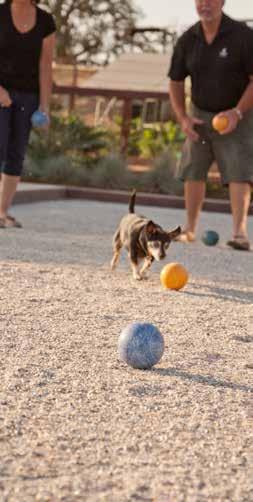



Although there is so much sensory stimulation, the focal point, if there is one, is the outdoor stove nestled into the exterior of the Carlson home, just off the main patio. Here the family eats many of their meals and huddles around the fire during cold nights.
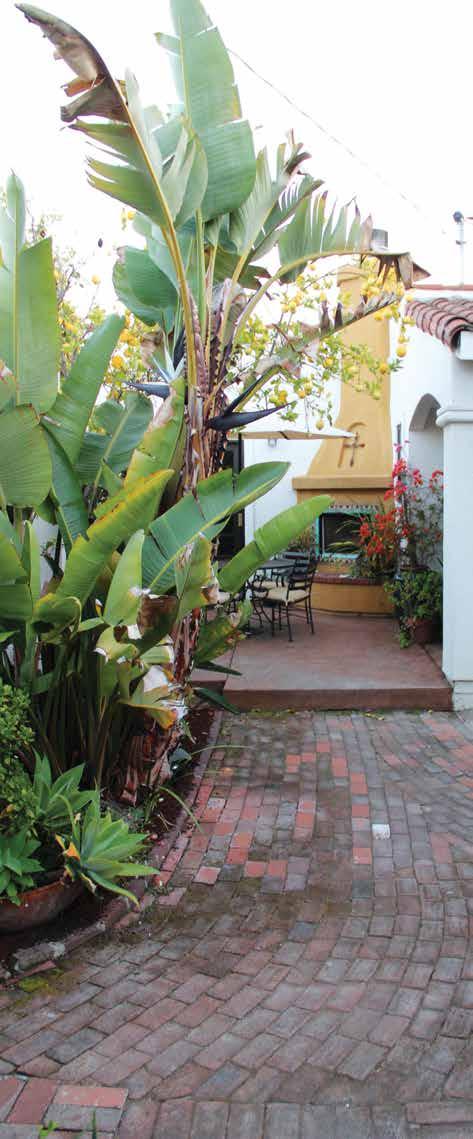
Scanning the yard, it is difficult to tell where one lot ends and another begins. And that is exactly the idea. “When I explain to people what we have done, they are often caught off-guard by it. For other people, it immediately strikes a nerve and they say, ‘Wow, that’s great. I love it!’ But then they usually ask, ‘Can you do that?’”
Poet Robert Frost wrote that “good fences make good neighbors,” but Carlson is genuinely puzzled by the interest people have in the homes’ lack of fences. He observes, “I think sometimes we just take the traditional way of living for granted, but there is always a different way.”



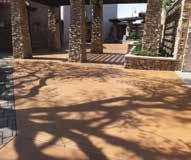

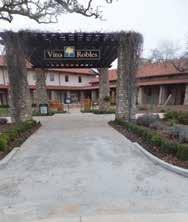





Total Homes Sold Average Asking Price Average Selling Price Sales Price as a % of Asking Price Average # of Days on the Market
Total Homes Sold Average Asking Price Average Selling Price Sales Price as a % of Asking Price Average # of Days on the Market
Total Homes Sold Average Asking Price Average Selling Price Sales Price as a % of Asking Price Average # of Days on the Market
2013 23 539,515 529,869 98.06 70
2014 23 623,730 610,091 97.92 58
+/0.00% 15.61% 15.14% -0.14% -17.14%
2013 9 691,644 692,933 100.17 11
2014 9 760,644 744,888 98.05 50
+/0.00% 9.98% 7.50% -2.12% 354.55%
2013 14 573,571 569,785 99.64 30
Total Homes Sold Average Asking Price Average Selling Price Sales Price as a % of Asking Price Average # of Days on the Market
down
2013 6 832,333 820,250 98.27 105
2014 16 605,797 595,364 98.54 35
+/14.29% 5.62% 4.49% -1.10% 16.67%
2014 6 964,500 929,000 96.72 90
+/0.00% 15.88% 13.26% -1.55% -14.29%
2013 18 594,292 578,833 97.67 60
2014 13 722,615 713,615 99.14 37 town
foothill
2014 24 687,442 675,264 98.09 36 blvd
Total Homes Sold Average Asking Price Average Selling Price Sales Price as a % of Asking Price Average # of Days on the Market
+/-27.78% 21.59% 23.29% 1.47% -38.33%
+/60.00% 13.84% 13.86% -0.24% -37.93%
+/-25.00% 14.42% 10.34% -3.44% 423.53%
SOURCE: San Luis Obispo Association of REALTORS®
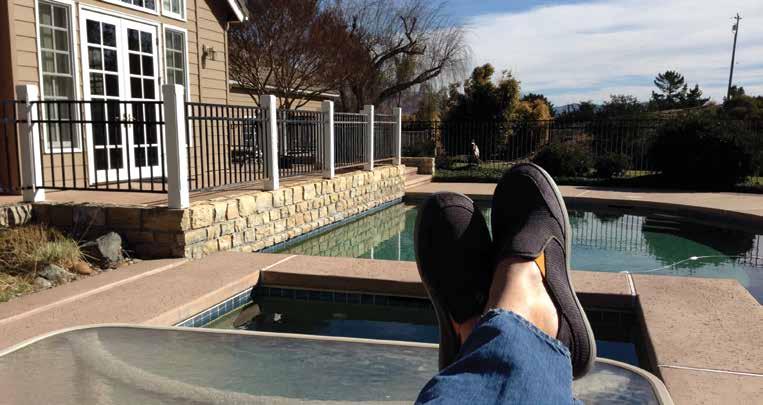


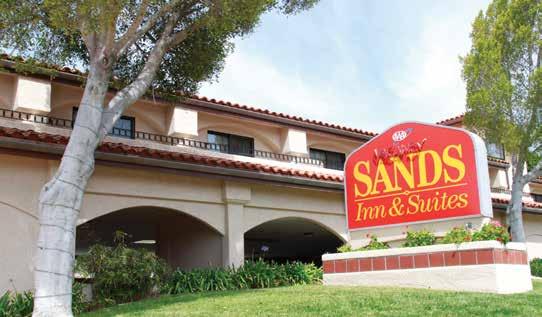




417,500 795,000 568,250 752,500 506,500 382,500 410,000 485,000 488,750 393,000 662,500 375,000 319,000 307,500 389,500 653,251 441,250 467,500 475,000









Get ready for summer with these gorgeous driftwood accessories. Perfect for decorating your home—inside or out. Driftwood crabs, seahorses, birdhouses, and hearts are also available.


lobster $29 // peace sign $32 // San Luis Traditions 748 Marsh Street, San Luis Obispo (805) 541-8500 // sanluistraditions.com
Made from sand, these these gleaming glass sculptures of seashore life are sure to turn heads. Sizes are approximately 5-to-8 inches. No two are alike, and the colors vary. Hand-made by the pros at Seattle Glassblowing Studio.


$145 - $275 // Fiona Bleu Gallery 900 Embarcadero, Morro Bay (805) 772-0541 // fionableugallery.com
Experience a huge selection of colors and styles of handblown, recycled glass imported directly from artisan glass blowers in Jalisco, Mexico. Whatever your drink of choice may be, this glassware will ensure it’s a festive one.
$5 + // Luna Rustica // 2959 Broad Street, San Luis Obispo (805) 546-8505 // lunarustica.com
When it comes to sustainable sophistication, there’s nothing finer than the solid bamboo furniture line from Greenington®. These exquisitely contoured bar stools mark the pinnacle of style and comfort. They come in a natural or dark walnut finish and are also available in counter height.

$189 + // Bambu Batu 1023 Broad Street San Luis Obispo (805) 788-0806 bambubatu.com
Explore the Chilewich collection of durable indoor/outdoor mats. Available in a wide array of styles and colors, they will enhance your interior and exterior spaces, while providing functionality underfoot.
$50+ // Hands Gallery // 777 Higuera Street, San Luis Obispo (805) 543-1921 // handsgallery.com

Whether he’s choosing his first ring or picking out an updated band for an anniversary, with several different handcrafted band styles to choose from using recycled golds and platinum, you’ll find hand-engraved organic patterns and textures that set him apart from the crowd.

$1,190 - $1,735 // Baxter Moerman Jewelry
1118 Morro Street, San Luis Obispo (805) 801-9117 // baxtermoerman.com
Get inspired by Mother Nature with the new Wood Collection by S’well, featured in a smooth Matte Finish. For every Wood bottle sold, their partner, American Forests, will plant one tree. Keeps your beverage cold for 24 hours and hot for 12.

$35 - $45 // Assets
853 Monterey Street San Luis Obispo (805) 781-0119 sloassets.com
You don’t have to go to Hawaii to feel like you are there. You can find the iconic Jam’s World clothing made in Hawaii since 1964 right here in San Luis Obispo. This amazing fabric is 100% rayon (natural fiber) that will wash and wear over and over again. Great for hot weather at home and on vacation. Other styles available.

$129 // Apropos
1022 Morro Street, SLO 840 11th Street, Paso Robles (805) 784-0664 shopapropos.com
The latest bags and wallets from New York designer Jack Spade debut just in time for graduation and Father’s Day. In addition to classic leather pieces, check out new designs that marry form with function, like this Tech Oxford slim brief—constructed from a proprietary performance fabric inspired by timeless menswear styling.

$ 78 - $548 // Ian Saude // 1003 Osos Street, San Luis Obispo (805) 784-0967 // iansaude.com
Explore the fantastic selection of Sea Glass necklaces, earrings and key chains inspired by the sea and colors of the sunset. Also showcasing exotic shell and beautiful pearl jewelry, perfect for this summer’s lifestyle.
$14 - $36 // Turn To Nature 786 Higuera Street, San Luis Obispo (805) 540-3395 // turntonature.com

1. Summer on the Central Coast means that all your favorite fruits and vegetables are now in season. SLO Veg will source the best of the bunch and deliver them straight to your doorstep just in time for dinner.

$27.82 - $40.66 // SLO Veg (805) 709-2780 // sloveg.com
2. Stop by Novo for Wine Wednesday from 5:00pm – 7:00pm and enjoy complimentary wine tasting. Featuring wine from the following: June 4th Filipponi Ranch Cellars; June 18th Sextant Winery; July 9th Wild Horse Winery; July 23rd Verdad Winery.

Novo Restaurant and Lounge 726 Higuera Street, San Luis Obispo (805) 543-3986 // novorestaurant.com
3. Luna Red is known for its small plate focused menu, however the new summer menu includes large meat dishes, meant to be shared with your table and accompanied by side tapas. Featured in this photo is an 18-ounce prime rib eye, grain fed and USDA certified natural black angus. Pair with sides such as local crispy spuds, cheesy mac and a seasonal grilled artichoke and you’ll have a meal the whole table will love.

$39 // Luna Red 1023 Chorro Street, San Luis Obispo (805) 540-5243 // lunaredslo.com
4. From Paso Robles, Verdelho is a summertime favorite that is an extremely tasty wine with aromas of lemon, melon, peach, and apricot. Slightly off dry, the mouthfeel is full and intense but also light.
$22 // Wild Horse Winery & Vineyards 1437 Wild Horse Winery Court, Templeton (805) 788-6300 // wildhorsewinery.com

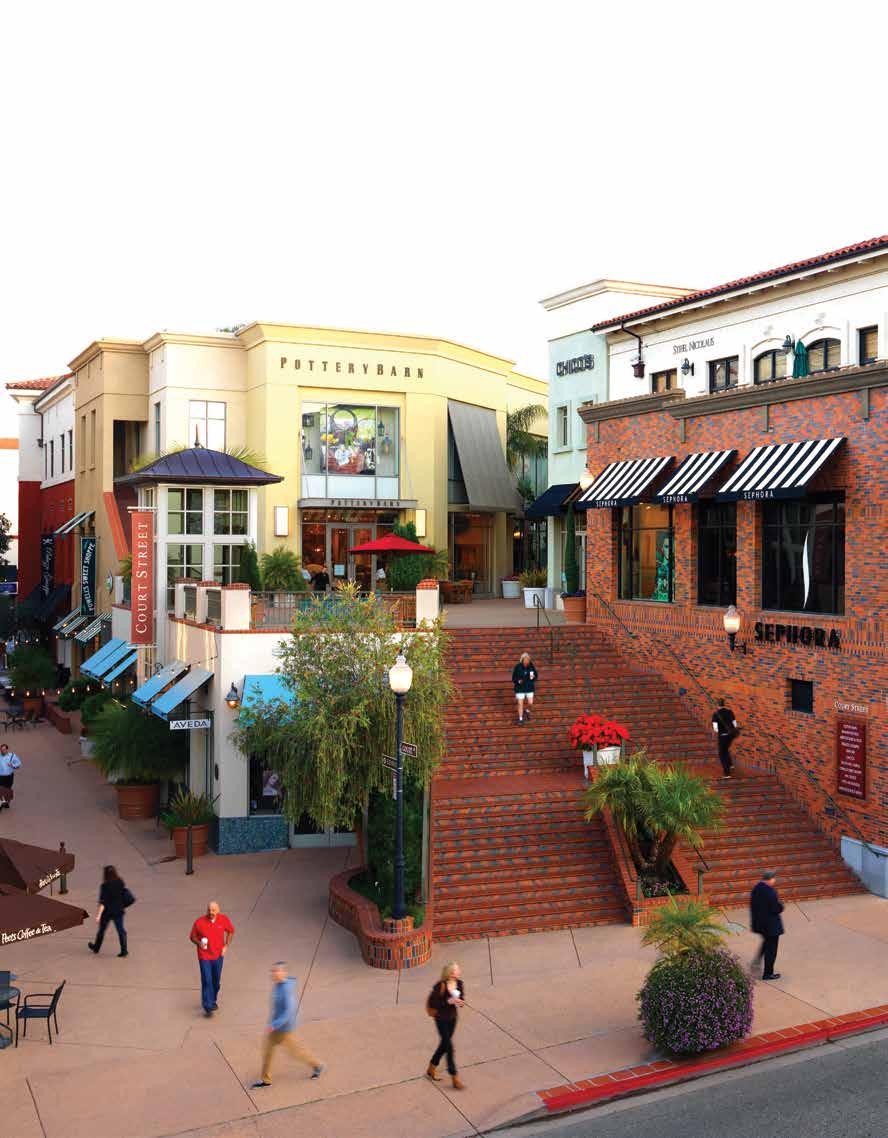

Sommer, Sara, and Nora—managers of Sephora, Pottery Barn, and Barnes & Noble—meet


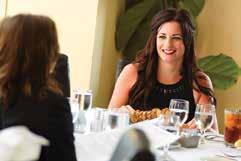
Take a walk through downtown San Luis Obispo, and you can’t help but feel the Central Coast vibe with its sunshine, ocean breezes, and strolling shoppers. Therese Cron, property manager of the San Luis Obispo Collection, wondered how SLO’s downtown district manages to feel so local while still delivering such a diversity of regional and national shopping? She invited Sommer Pezzi, Sara Boller, and Nora Johnson—managers for national powerhouses Sephora, Pottery Barn, and Barnes & Noble—for a lunch meeting at Palazzo Giuseppe to talk about how they infuse their national shops with SLO spirit.
Sommer, Sara, and Nora found their ways to the Central Coast from regions as far flung as Guam to as nearby as Morongo Valley, but they all share a passion for California’s local culture. Sommer has lived in Shell Beach for more than fourteen years. She calls her staff at Sephora “amazing” and encourages them to challenge themselves daily to provide Sephora’s clients with a sense of home. Sara—a true local—has been in San Luis Obispo since she started Cal Poly in 1989.
She was a store manager and footwear buyer for local favorite Copeland Sports. When that business sold, she transplanted her local spirit straight into the heart of SLO’s new Pottery Barn location. Nora—the Centeral Coast’s most recent transplant—lives in Atascadero. She believes that bookstores are the heart of a community, and one of her favorite things is working with Central Coast schools, hosting book fairs and field trips, keeping school reading lists in stock, and giving away free books through Barnes & Noble’s Summer Reading Program.
All three managers agree that making a personal connection with local clients is the key to mixing local spice into the national brew. Sommer loves thinking out of the box when she’s assisting her local clientele, treating clients as if they are friends—and indeed, she says, many clients do become friends. As Therese concluded from their discussion, “San Luis Obispo has all the amenities of a world-class shopping destination, but with much better weather and relaxed, happy managers who really love what they do.”
Pictured right: top to bottom: Sommer, Nora, Sara




At the San Luis Obispo Downtown Association we are in the business of creating unique experiences for our residents and guests that are just as memorable as the smell of fresh cut grass and a Santa Maria style BBQ. SLO’s downtown has a rich diversity of businesses, friendships, and backgrounds as well as the stories that go along with so much local character. These kinds of personal connections transform a Thursday night Farmers’ Market into an experience as memorable as a first kiss or the last taste of a barbequed rib that you still dream about. While the kiss and the rib are the focal point of the memory, the ambiance surrounding that moment is what makes the experience memorable. Providing this sense of place and community is something the SLO Downtown Association takes very seriously.
Today, walking through downtown San Luis Obispo you can still see the buildings that this town was built around: Mission San Luis Obispo de Tolosa, the Anderson and Wineman Hotels, and the Creamery for example. When San Luis Obispo developed, Downtown was the cultural center for many miles and those buildings were the foundation for many people’s businesses and fondest memories. My dad recalls, as a young boy, bouncing down a country road toward the Downtown Creamery to deposit the family farm’s milk. The careful preservation of the buildings and local economy are the keystones of what created the atmosphere that has drawn guests from around the world to our neighborhood for many years.
While putting lights in trees creates an
experience for visitors, it’s really just teeing up the chance for the next set of memories and stories to be shared with future generations of the “Great Downtown San Luis Obispo.”
As a neighborhood we take pride in keeping the streets clean and inviting, much like people take pride in keeping their front yards manicured and green. We do this because we want people from surrounding neighborhoods to feel welcome and safe when they visit, and we hope to see them often. This simple act of sharing our shops and businesses with the rest
of the community is the result of generations of cultural exchanges among neighbors. In turn, those exchanges create a hub for the community where rich experiences happen and fond memories are born. For 39 years the San Luis Obispo Downtown Association has played host to countless parades, markets, concerts, events, and warm summer nights, and we look forward to many more years to come where our traditions can become your fondest memories. Visit downtownslo.com to learn more.

Abercrombie & Fitch abercrombie.com
Banana Republic bananarepublic.com
Chico’s chicos.com Express express.com GAP gap.com
Ian Saude Gallery iansaude.com
Moondoggies Surf Shop moondoggies.com
Pottery Barn potterybarn.com
Solstice Sunglass Boutique solsticesunglasses.com Sunglass Hut sunglasshut.com
Urban Outfitters urbanoutfitters.com
Victoria’s Secret victoriassecret.com
White House Black Market whitehouseblackmarket.com
Bali’s Yogurt 805-594-1172
Bull’s Tavern facebook.com/bullstavernslo Chinos Rock & Tacos chinorocks.com
California Pizza Kitchen cpk.com
Jamba Juice jambajuice.com
Palazzo Giuseppe palazzogiuseppe.com Pizza Solo pizzasolo.com
Sal’s Paradise slosals.com

SloCo Pasty Co. slocopastyco.com
Splash Cafe Seafood & Grill splashcafe.com Starbucks starbucks.com
SERVICES Sephora sephora.com
Salon Lux-Aveda salonlux.com
The Apple Store apple.com Barnes and Noble barnesandnoble.com
Cal Poly Downtown calpoly.edu
The Movie Experience themovieexperience.com
Open Air Flowers openairflowersslo.com Papyrus papyrusonline.com
Powell’s Sweet Shoppe powellsss.com
Man-about-town George Krauth dishes on the fashions, flavors, designs, and décor he discovers as he travels the globe tracking trends as Creative Director for Jamestown.
I was a kid, I collected things related to travel: restaurant matchbooks, postcards, even airline luggage tags. Fueled by an assortment of swizzle sticks from a globe trotting aunt collected at the dawn of the Jet Age, this penchant for squirreling away cool stuff has served me well as Creative Director for Jamestown. I encourage all my team members to make note of the things that inspire them, and we compete in a friendly competition to bring in the next chip of tile or swatch of fabric that will end up in Jamestown’s
latest big development. The Creative & Marketing team’s main task is to create brands for Jamestown developments. Not only are we charged with building the brand identities themselves, each with a logo, website, and an array of printed collateral; we are also challenged to extend those brands in all kinds of ways, including signage, fixtures and furnishings, colors and trims, façades, and the creation of brands-within-brands for events and specialized activities. Everything inspires us: the felted coaster under our bourbon at the local
pub, the color of the sky over San Francisco Bay in September, the ribbon on a tote bag we found at the gift show in Paris. We pin our inspirations to vision boards that we’ve created for each of our brands. This encourages us to brainstorm in plain sight. It’s pretty amazing, as a new brand develops, to let your eyes drift from a tattered old signal flag you pinned to the board months before to the bright blue brand it inspired at a property like One West Victory. Visit Jamestownlp.com for more inspiration.
Surfing and bagpipes are not customarily mentioned in the same sentence. But Ryan MacDonald, who lives in the Edna Valley just outside the city limits of San Luis Obispo, rolls those two words from his tongue just as smoothly as he dons his custom-made kilt.

When MacDonald was growing up in the tiny 4,000-person mountain town of Sonora, which is near Yosemite, he took his Scottish heritage as seriously as he did the high jumping event for his high school track team. When his grandfather passed away during his junior year, he was overcome by the idea of learning to play the bagpipes. “I set a goal for myself,” recalls MacDonald. “I would return to my grandfather’s gravesite one year later to play a tribute to him.”
The bagpipes are a notoriously difficult instrument to learn, and up to that point the high schooler had no musical background of any sort. In addition to their technical challenges, the bagpipes require a tremendous level of physical strength, which makes the instrument’s learning curve that much more daunting. But MacDonald was committed—spending his free time learning the unorthodox instrument as well as studying everything he could about his family’s history.
At the one-year mark, his sister gifted him with a custommade Scottish “clan kilt” with their particular branch of the MacDonald family’s tartan (or pattern) woven into the wool. He played his heart out at his grandfather’s gravesite and then came down out of the Sierras to attend Cuesta College where he would continue his high-jumping exploits.
One day his friends asked him if he would like to join them surfing, and the young bagpiper was hooked immediately. “I don’t know what happened exactly,” he shares through his flowing facial hair, “but I said to myself right then and there, ‘I want to work at a surf shop at all costs.’” After seven years at Pancho’s Surf Shop in Pismo Beach, the twenty-seven-year-old MacDonald is now the manager. He regularly shows up early to hit the surf next to the pier and has been known to wander around the boardwalk jamming on his bagpipes where he reveals, “people are usually tripping out” at the music.
As part of the musical group known as Central Coast Pipes & Drums, MacDonald and his bagpipes are in high demand. “People come up to me after I play and often become very emotional and tear up as they share their connection to the bagpipes. They’ll say, ‘Wow, that reminded me of my grandfather or my mom.’” Pausing for a moment to collect his thoughts he then adds, “For me, it’s about carrying on that tradition.”

When San Luis Obispo resident MIKE KRUKOW walks into a room his enthusiasm is palpable, and it carries over into everything he does. The former San Francisco Giants pitcher remains in the game he loves as a broadcaster— with a style all his own.

The Miami Marlins have arrived in town for a three game series and San Luis Obispo resident Mike Krukow is already in fullform two hours before game time. Rising from his chair overlooking the field at AT&T Park in San Francisco, he extends both arms and shouts out to the visiting broadcast booth next door, “Hey, where you guys been?!” He gestures at his watch in mock disbelief. The once sullenfaced Floridians shake their heads in laughter, “It’s great to be back, Kruk,” one retorts, now wearing a broad smile.
1973 and, after paying his dues in the minors, Krukow was called up to pitch at Wrigley Field in 1976. Following a solid six years of duty for the Cubs, he was traded to the Philadelphia Phillies. A year later, the Phillies called the San Francisco Giants to talk them into swapping second basement Joe Morgan for Mike Krukow.
As a nine-year-old grammar school student, Krukow sat patiently waiting for the recess bell to ring one day while his teacher droned on about different types of jobs. “She told us about blue collar workers and white collar workers,” he remembers. When class finally let out, Krukow pondered the color of his future collar as he and his classmates got another baseball game going out on the playground. After school that day he went home and told his mother, “I don’t want to wear any collar, Mom—I want to be a baseball player.”
Childhood was a series of baseball games, one following another. Before long, Krukow was the big man on campus at San Gabriel High School. With his sweetheart, Jennifer, in the stands cheering him on, rumors began to swirl that some Big League clubs had interest in the young catcher. Krukow’s collar-less future was within reach when it was announced that the California Angels had selected him in the 32nd round of the 1970 Major League Baseball Draft. He declined, and instead came up to San Luis Obispo where he enrolled at Cal Poly and joined baseball team.
Fortunes shifted when Krukow moved from behind the plate to the top of the mound. As a pitcher, the Cal Poly Mustang posted a 1.94 earned run average, which is a record that stands to this day. It was not long before the same Major League scouts that had been analyzing his abilities as a catcher, began to sing his praises as a pitcher. The Chicago Cubs snapped up the prospect in the 8th round in
When Krukow unpacked his bags in the clubhouse deep in the bowels of Candlestick Park, he found himself with a team in transition—to use baseball parlance, the Giants were “rebuilding.” Recognizing the need for good leadership within the team, the powers-that-be elected to hold on to their ailing infielder, Duane Kuiper, who had recently blown out his knee but was now an important insurance policy since Morgan was in Philadelphia. Since Kuiper’s role was more of a spot starter and pinch hitter, he spent a lot of time on the bench. And, as Krukow was a starting pitcher who played every fifth day, the pair found themselves together in the dugout often. Krukow initially dismissed Kuiper, “I thought he was a jerk,” but eventually became intrigued with his commentary during the game. Before long, the two were cracking themselves up with funny observations, mostly of other ballplayers, as they called the game for their teammates from inside the dugout.
After a lifetime in baseball, Mike Krukow admits that “very little of what I say is original—I’m just bringing it from the dugout to the broadcast.” Wherever it came from originally, his lexicon is hugely popular with Giants fans and rather unconventional in the world of sportscasting. Here is a small sampling from the “Kruktionary”…
When the opposing team’s hitter strikes out. This is Krukow’s signature line and his voice can be heard in the Electronic Arts video game “MVP Baseball” when a strikeout occurs.
The Giants place volunteers in full uniform, usually men in their 60’s or 70’s, in front of the bullpen in the foul territories on either side of the field to protect the catcher, who is looking the other way, from wayward foul balls. Krukow calls them “ball dudes” and likes to comment on their fielding efforts.
While Krukow was bouncing around from team to team and logging big miles on the road, his high-school-sweetheart-turned-wife, Jennifer, held down the fort in Pasadena, near their old stomping grounds and, most importantly, close to the couple’s parents. The Krukows were busy with their young family and both sets of grandparents played an essential role. Eventually Krukow began hosting an annual charity golf tournament in San Luis Obispo. Those annual trips morphed into two-weeklong family vacations. “After a while, it was like a slap in the face—why don’t we live here?” The Krukows had been sobered by the public school situation in Pasadena and viewed a move to the Central Coast as the best shot for their children. “It was the greatest thing we ever did,” explains Krukow. “The quality of life, the quality of public school education, the security.”
A fan with his stomach protruding from below his t-shirt. During a blowout when the game has gotten out of hand, and frankly no longer very interesting, Krukow and his partner Duane Kuiper are known to go on for several innings good-naturedly poking fun at fans.
Krukow observed a fan wearing a huge horse head costume and a Giants jersey swilling a brew in the stands. A classic Krukow commentary.
Krukow insists that fans bring a their gloves to the ballpark and is relentless when a gloveless spectator misses a foul ball. >>


But, while Krukow was able to shake off signs from his catcher—if he wanted a curveball while his catcher wanted a fastball, the pitcher always had the last say—this was not the case with his mother-in-law. “She was pissed,” Krukow states flatly remembering the day he broke the news that he was taking her daughter and her grandchildren and heading for greener pastures in San Luis Obispo. “She didn’t talk to me for two years.” The silent treatment finally ended during a Thanksgiving visit when she grabbed the lanky pitcher by his throwing arm, pulling him toward her within whisper distance to say, “You made the right choice.” His in-laws eventually followed the Krukows finally settling in Arroyo Grande. Krukow’s parents, however, took a different approach. “When I told them we were moving, they said, ‘We’re coming with you,’ and proceeded us to San Luis by a couple of months.” The Krukow clan was then complete, fully relocated on the Central Coast.
In 1986, Krukow had posted an incredible 20 wins and was selected to pitch in the All-Star game. The following season Krukow was a key component in the Giants’ championship run—they lost to the Cardinals in the National League Championship Series that went seven games. (Krukow won the fourth contest and pitched a complete game.) But, it was during those years that he began to notice something was not quite right. His arm was not recovering like it once had. The next couple of years were punctuated by stints on the disabled list, and in the fifth inning of a game against the Atlanta Braves on June 11, 1989, he felt a pop in his shoulder. A month later Krukow underwent arthroscopic surgery to repair his torn rotator cuff. He officially retired in March of the following year.
With his baseball career over and a houseful of young kids to raise, Krukow looked to make a career change. The Giants had offered him a job as their pitching coach. “I told them I couldn’t do it. I’ve got to get back to my life. I’ve got four kids, and my wife’s pregnant. I need to be home.” Krukow tried his hand in the restaurant business by joining up with a former teammate to operate a group of Central Coast establishments including This Old House in San Luis Obispo and the SeaVenture
Restaurant in Pismo Beach. Then, the following year, in an ironic twist of fate, Joe Morgan—the same Joe Morgan who the Giants had traded for Krukow back in 1982—was in the broadcast booth calling games. It turned out that Morgan could not make it to 15 of the home games during the season and they were looking for a stand-in. “Could you fill in, Kruk?” the caller from the Giants front office inquired. “I was miserable away from the game, like a fish out of water in the restaurant business. My wife told me to do it.”
This is how Krukow refers to his alma mater, Cal Poly, during broadcasts.
“There’s magic here every night,” Krukow says as he points from his spot in the booth toward the diamond. “And it’s a great feeling to have someone listen to what you have to say, something that you are so passionate about. You don’t know how long it’s going to last. You take every day like it’s going to be your last one.” With his signature thick head of white hair moving along with the breeze coming off McCovey Cove, Krukow pauses briefly to reflect on his own comment. His family has experienced tremendous loss recently, as Jennifer’s parents and brother all passed away during the last 18 months.
Down below, the distinctive sound of cracking bats can be heard from the field as the Giants take their turn stepping into the batting cage. Occasionally a ball sails over the fence. A smattering of fans flank the lower reserve seats, hoping to catch a glimpse of their favorite player. Giants All-Star catcher, Buster Posey, steps up to the plate and cheers go out with each one of his line drives. Krukow changes the subject, sharing the secret to Posey’s success: balance on the front foot, inside-out-swing, taking what the pitchers give him, before returning to talk about his wife. “She’s had a really tough road lately, we all have. And just about the only thing that makes her happy these days are the grandkids.”
All five of their children are now involved in separate careers away from the Central Coast: Jarek, 34, lives in New York and works in sales; Baker, 30, is a manager at Graybar and lives in Reno with his wife and two children; Tessa,
A couple of years ago Krukow spotted a group of moms decked out in orange and black for a game on Mother’s Day. Off the cuff, he admiringly declared that they were “gamer babes from Half Moon Bay.” The name stuck and now identifies female fans who “wear the colors and know what’s what.”
JIMMY JACKIN’ AROUND
Wasting time, not paying attention. “The pitcher keeps Jimmy Jackin’ around with the rosin bag.”
CAN OF CORN
Any easy-to-catch routine fly ball.
UGLY FINDER
A foul ball that rockets into the dugout.
A unique take on the Giants beer sponsor and reportedly Krukow’s favorite brew.
I WANNA GET THAT, I WANNA GET THAT, I WANNA GET THAT!
Repeated three times quickly and excitedly during a broadcast after announcing some new item available in the Giants dugout store.
DEAD BIRD, DUCK SNORT, TEXAS LEAGUER, THING OF BEAUTY
Krukow alternates these descriptions for a bloop single, which is a hit, usually off a broken bat, that should have otherwise been an easy out.






28, found love in Australia where she lives with her boyfriend and works as a Crossfit trainer; Chase, 26, tends bar not far from the stadium in San Francisco; and Westin, 24, also in San Francisco, is a professional ballet dancer. Krukow’s pride is palpable when discussing his kids, and he reflects upon their upbringing in San Luis Obispo where they attended Los Ranchos Elementary, Laguna Middle School, and SLO High. “With a big family you kind of go up and down a bit financially. We almost lost the house like three times, but we always felt like we were the richest people on the planet because of how we lived and the air we got to breath, the environment, the schools. It’s an amazing place to live.” But, just as they did
baseball with others. He has been active in the Bay Area where he can be found donating his services to emcee non-profit events. Closer to home his annual charity golf tournament, at its high water mark, raised close to $30,000. He has also been a key supporter to Cal Poly Baseball, which he often references in his broadcast. In addition to supplying valuable items for the Mustang Madness auction—he once donated a ball signed by Barry Bonds— he has lent his name to the premium season ticket holder area at Baggett Stadium, which is known as “Kruk’s Klubhouse.” Some may also remember Krukow dispensing pitching advice to local youngsters as he donned his full uniform at Sinsheimer Stadium while parents
In a game against the Minnesota Twins on June 14, 2005, Krukow watched with amusement as fans there asked their broadcaster, Bert Blyleven, to circle them on his telestrator. Krukow developed his own spin on the “Circle Me, Bert” routine by “eliminating” spectators, or whiting them out, when he caught them talking on a cell phone during the game or failing to hand over a foul ball to a nearby child. Eliminating fans caught on with viewers in a big way and soon spectators were showing up at the park with signs that read, “Eliminate me, Kruk!” After his television station began selling sponsorships for the eliminations, the whole thing died down. Now, Krukow saves it for special occasions.
when they pulled up stakes in Pasadena while beginning their family, the empty nested Krukows are on the move again. This time, the lure of the grandkids has enticed them to relocate to Reno. Krukow describes the decision as the “most emotional thing” he has gone through. “How do you go to Reno from San Luis Obispo? Are you kidding me?”
stood by anxiously checking their watches as he continued talking ball with the kids well beyond the scheduled stopping time.
From the very first time he first took the mound at Wrigley Field where he retired the first seven batters he faced as a rookie, Mike Krukow has been winning the hearts and minds of baseball fans. Only now, it’s not his fastball, it’s his quick wit, keen sense of humor, and encyclopedic knowledge of the game. The Emmy Award-winning 62-year-old broadcaster references Vin Scully, the 86-year-old play-byplay announcer for the Los Angeles Dodgers as reason for a lot more baseball ahead. “I was extremely lucky to have a second life in this game, and I’ll continue to do this until I can’t get on the plane anymore.”
The gratitude Krukow feels for his two acts in the Big Leagues shows up in his charitable works and his desire to share the magic of
Krukow calls growing up in baseball “the Reader’s Digest version of life” where everything revolves around the game. Players forever remain nine-year-old versions of themselves. And, maybe that’s where the magic he describes comes in. Maybe it is his youthful exuberance for the game that fans find as appealing as his ability to breakdown the complexities of the pitcherbatter contest. Or, is it his uncanny ability— usually during a blowout—to spot a kid in the crowd struggling to eat an oversized ice cream cone? Krukow has been known to describe the scene in great detail over three or four innings, and make a lopsided game enjoyable. In many ways, with his positive attitude—he does not hesitate to compliment the other team—his love for the game, and his light-hearted humor, Krukow symbolizes everything that is right in baseball. And, although he will no longer reside in San Luis Obispo, he vows to return often; and, as he is found of telling fans who faithfully tune into every broadcast, “We have dinner with you six months out of the year.”
Three of Krukow’s four sons played for the San Luis Obispo Blues. Jarek and Baker were both catchers, and Chase was a pitcher. Baker went on to play for the University of Nevada where the switch-hitting catcher also spent time as the team’s designated hitter.
...we always felt like we were the richest people on the planet because of how we lived and the air we got to breath, the environment, the schools. It’s an amazing place to live.












I sold my first sculpture out of a gallery in Cambria 34 years ago. It was a wood-carved blue whale. Since then I’ve sold over 20,000 sculptures—some of them in the six-figures— but I’ve never reached the thrill of that first sale. The feeling I had that day was almost child-like realizing that I had created something that somebody else really valued.
I grew up Catholic and I always tripped out on all of the amazing art in church. When I was eight or nine-years-old my father caught me whittling a piece of wood with some steak knives, so he bought me a set of carving tools. My dad kept helping me along with my hobby, and by the time I was twelve, I was doing full-blown busts, like Beethoven, in wood. It was kind of rough, but not bad for a kid.
Twenty-five years ago or so I sculpted a table that I called “Dolphin Duet” and I knew it was a winner, so I made a bunch of them. I took an ad out in Architectural Digest, a half-page ad; it cost me everything I had in the bank. I think it was about $10,000 back then. It was just a huge gamble, but it ended up paying off. I sold out of the tables. They just took off. ”

When I was in Hawaii a praying mantis landed on my shoulder. It looked me square in the eye and with a British accent it said, “Me and my cousins are your future.” So, after being all-in with marine art, I got pulled into insects, which represented a big career change for me. I started studying everything I could about insects. I learned they could eat their body weight in an hour—or something along those lines—it takes me at least three hours to do that.
I think people try to build a lot of hype around their art. They try to say it represents something or another and they get way out on a limb. A majority of artists overcomplicate what is basically a simple process. I think that people like to embellish and wear round glasses and Versace turtlenecks and sip cappuccino and postulate, if you will. I’m not part of that camp.






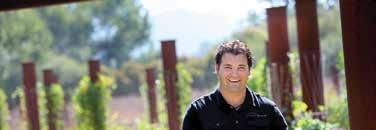
 Welcoming Chef Gregg Wangard to GARDENS
Sycamore is happy to announce Gregg Wangard as the new Executive Chef of Gardens Restaurant featuring Spontaneous Garden Cuisine
MICHAEL NOWAK, MUSIC DIRECTOR
Welcoming Chef Gregg Wangard to GARDENS
Sycamore is happy to announce Gregg Wangard as the new Executive Chef of Gardens Restaurant featuring Spontaneous Garden Cuisine
MICHAEL NOWAK, MUSIC DIRECTOR




Always looking for a new way to experience outdoor fun, my husband and I made a commitment earlier this year to pencil in daytime dates. Our most recent interest—golf.
The first time we played, we tried a version of “best ball,” which to my understanding means no matter how poorly you hit your golf ball, you can pick up your ball and shoot from your teammate’s better shot. This is probably the best way to learn golf because you consistently advance, you have an opportunity to practice using different clubs at different angles, and you keep up with the more skilled golfers.
Truly feeling up to par with skilled golfers takes time, for sure. And, if you’re like me and hate to stink at anything, you understand how sheer stubbornness can set in early on in an attempt to perfect your game. At first, I cared about just two things: keeping my head down and making contact with the ball. I can’t explain the joy I felt when I actually nailed it: I hit that golf ball airborne and straight!
I can happily say after time I noticed improvement in my game—and I’m known to stick with things if I see even the slightest amount of improvement. A friend of mine who manages golf courses says, “No matter how frustrating a game can get, there is always that one perfect shot that keeps you coming back.”
So, I kept coming back to golf. But even with improvements, after having played soccer and other fast-paced sports, I wasn’t convinced that golf was engaging enough to warrant owning my own clubs. Surprisingly, I now regularly find myself on a golf course with my own set of bright pink Wilson Hope golf clubs (which benefit Breast Cancer Research Foundation), a pink polo, and a white skirt.
And now, my husband and I have a favorite short course in the area: the Challenge Course at the Monarch Dunes Golf Course in Nipomo. This 12-hole,
par-three course is the perfect distance for new players, yet it also adds the challenges of small lakes, dunes, and sand traps. The $16 per person player fee is accessible for beginners who might feel reluctant to pay over $50 for a round. Additionally, the Challenge Course is not as busy as the 18-hole “Old Course,” which means newbies have time to practice their swings and not feel like the group behind them is waiting impatiently or trying to pass them.
Truth be told, I used to believe that golf was either for male executives looking to network, or much older couples looking to get some exercise. I’ve come to realize that golf is a sport for everyone. While it takes time, practice, and focus to improve, golf is also one of the more relaxing, centering, and enjoyable activities I’ve experienced. SLO LIFE
Challenge Course Green Fees


Public Rate $16
Public Replay $10 Members Rate $12 Members Replay $10
“We were first time home buyers and Graham was more than helpful. He was patient and really listened to what our needs were. Graham did not push us and offered guidance that was non-judgmental and informative. He was timely and approachable which reduced our stress level. We could not have been happier with our experience working with Graham and now have a place to call our own.”


FROM NORTH
Take the 101 South Freeway Exit Willow Turn right on Willow Turn left on Via Concha Turn right on Trilogy Parkway Take an immediate right into Monarch Dunes parking lot
FROM SOUTH
Take the 101 North Freeway Exit Willow Turn left on Willow Turn left on Via Concha Turn right on Trilogy Parkway Take an immediate right into Monarch Dunes parking lot
Most people define resilience as the ability to bounce back from adversity, but few realize that it is made up of a number of different skills and abilities. It’s about the ability to deal with difficulty through being adaptable and creative. It is not denying difficulty, but working through it. When we lose resilience we become rigid in our thoughts, narrow in our emotions, and unable to see that we have choices.
In his best-selling book, The Resiliency Advantage, the late Al Siebert, PhD, writes that “highly resilient people are flexible, adapt to new circumstances quickly, and thrive in constant change. Most important, they expect to bounce back and feel confident that they will. They have a knack for creating good luck out of circumstances that many others see as bad luck.”
Read on to discover the most powerful ways to boost your resilience.

Kids have enthusiasm in abundance, but as we age, societal and organizational pressures quietly tell us that having fun and being serious don’t go together. Not surprisingly, zest is a strong predictor of work and life satisfaction. “Playful humor enhances survival for many reasons,” writes Siebert in The Survivor Personality. For one thing, he notes, “Laughing reduces tension to more moderate levels.” In addition, having fun helps you socialize, provides an outlet for learning and creativity, and has great health benefits.
Use this four-step process when you are unhappy with a reaction you had, or simply want to find a new way of looking at a problem. This technique is based on the work of Drs. Albert Ellis and Aaron Beck, and can help you better understand why you react the way you do to certain situations. First, describe factually what pushed your buttons (who, what, where, when); second, write down your reaction—both
What is it that allows some people to be knocked down by life and come back stronger than ever, rather than letting failure overcome them and drain their resolve?


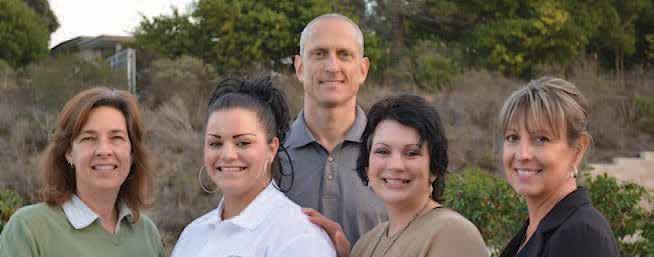


what you did and how you felt (I felt angry and yelled); third, write down exactly what you were thinking in-the-moment during the challenge; and fourth, ask yourself whether your reaction helped or hurt your ability to find a solution. If you find that your reactions are harming your leadership ability, relationships, or other aspects of your life, target your thinking, which is where we have the most control.
Being of service to others is a powerful way of stoking resilience. “In studies, researchers found that serotonin—the neurotransmitter associated with feelings of happiness and well-being—is used more efficiently by people who have just engaged in an act of kindness,” explains David Sabine, PhD, a clinical psychologist.
Acts of kindness, and the serotonin boosts that accompany them, have a cumulative effect. “Once you’ve added these things to your life in a consistent way, the benefits become exponential, so that in times of difficulty you’ve got this well of resiliency to draw upon,” says Sabine.
Acts of kindness can be formally organized, like regularly volunteering in a soup kitchen. Or, Sabine says, they can be “as simple as getting out there and finding people to smile at or speak an encouraging word to.”
It’s worth noting, though, that receiving and appreciating kindness from others may be just as important as offering it up, because gratitude turns out to be an important part of resiliency, according to clinical social worker Darcy Smith.
When adversity strikes, gratitude for the things that are going right in your life helps put tragedy in perspective. “I often recommend that people start a 30-day gratitude journal,” she says. “Or get a few of your friends together and start a gratitude blog. I did that about a year ago. Every day we each blog about three things we’re grateful for.”
Another strategy for building gratitude comes from Barbara Fredrickson, PhD, the author of Positivity. Called “un-adapting,” it involves consciously drawing attention to the positive things in your life that you may have started taking for granted. “Our emotions typically respond to dramatic changes, but a lot of good things—a roof over your head, the ability to feed your children, a career you enjoy—are stable. As a result, they fade into the background. So what you can do is deliberately draw your attention to them.”

She cites a study in which researchers asked married couples to “un-adapt” by thinking of how they might not have met—if one had decided not to go to the grocery store that day or had turned down the blind date, for example. “Then the researchers compared the couples who imagined not meeting to a group of couples who instead were asked to tell the story of how they did meet,” continues Fredrickson. “Later, when quizzed about their satisfaction in the marriage, the people who thought about how they might not have met reported more satisfaction. Without un-adapting, the couples might have thought, ‘Well of course we met, we were destined to be together,’ which is a recipe for taking each other for granted.”
According to Fredrickson, when you take stock of how things might have been otherwise, instead of just how they are, you’re using strategic positive thinking to increase gratitude, which then builds resiliency.
“In our research program, we found that the daily repertoire of emotions of people who are highly resilient is remarkably different from those who are not,” says Fredrickson.
Resilient people are characterized by an ability to experience both negative and positive emotions even in difficult or painful situations, she says. They mourn losses and endure frustrations, but they also find redeeming potential or value in most challenges.
When not-so-resilient people face difficulties, Fredrickson notes, all of their emotions turn negative. If things are good, they feel good, but if things are bad, they feel horrid.
Resilient people, on the other hand, tend to find some silver lining in even the worst of circumstances. While they certainly see and acknowledge the bad, Fredrickson says, “they’ll find a way to also see the good. They’ll say, ‘Well at least I didn’t have this other problem.’”
She notes that this is different than succumbing to Pollyanna-ish denial. “The resilient person isn’t papering over the negative emotions, but instead letting them sit side by side with other feelings. So at the same time they’re feeling ‘I’m sad about that,’ they’re also prone to thinking, ‘but I’m grateful about this.’” Being optimistic isn’t always being happy. It’s taking the challenges that life brings your way and saying, “I’m not going to let this get me down.”
But what if this sort of well-balanced emotional response doesn’t come naturally to you? You can change that, says Fredrickson. But it will mean challenging your reflexive thoughts, and your self-talk.“Thinking patterns trigger emotional patterns,” she explains. “So to change emotional patterns, sometimes what we need to do is curtail our negative thinking and stoke our positive thinking.
“Say you find yourself ruminating on negative thoughts,” she says. “For instance: I’ll never succeed in my career. Ask yourself, ‘What’s the evidence that I’ll never succeed?’ You might say, ‘Well, there’s this history of success and this history of failure.’ How does that add up to never? It’s a matter of getting really literal about the kinds of blanket statements we have in our self-talk.” >>


Because of built-in survival mechanisms, our brains are naturally wired to pay more attention to negative events than positive ones. But in reality, we experience positive events with much greater frequency. One key to building resiliency, says Fredrickson, lies in noticing and appreciating those positive experiences whenever and wherever they occur.
Good health and a regular routine of healthy habits are foundational to both mental and emotional resilience.
Daily habits count. When you’re caught up on sleep, eating well and keeping stress levels low, you’ll be less fragile and less likely to fall into unhealthy patterns following a serious setback or tragedy.
But our physical resilience also depends heavily on our baseline mental and emotional well-being. And one of the best ways to nurture that, says Carol Orsborn, PhD, author of The Art of Resilience: 100 Paths to Wisdom and Strength in an Uncertain World, is to take regular mental breaks. “It could be something as formal as a regular meditation practice,” she says, “or it could simply be letting yourself daydream.”
Research shows that our brains are surprisingly active in moments when we appear to be doing little. PET and MRI images of the brain “at rest” show that, in fact, there is significant activity in the brain regions associated with decision-making, memories and the processing of emotionally significant events.
When active, this “default network,” uses up to 30 percent more caloric energy than other parts of the brain. Researchers surmise that energy is being used to process all the experiences and information we’ve taken in, and to develop new synaptic connections. In turn, those synaptic networks improve our ability to solve and respond to problems. Mental breaks and relaxation also help keep stress chemicals at bay, reducing the likelihood of feeling, or becoming, overwhelmed and reactive.
Two other key self-care factors that help nurture resilience: spending time outdoors and surrounding yourself with people you enjoy. Research suggests that spending just 20 minutes outside in nice weather leads to “more expansive and open thinking,” writes Fredrickson—a pro-resiliency mindset. Other studies have shown that time in nature helps combat anxiety and depression, improves immunity, and lowers levels of inflammatory chemicals in the body.
A similarly convincing body of research shows that strong social connections increase our resilience in the face of illness. One 2006 study of nearly 3,000 nurses with breast cancer found that those with ten or more friends were four times more likely to survive the disease than the nurses without close friends.

Remember the children’s book The Little Engine that Could? The phrase the engine kept uttering was, “I think I can, I think I can.” That is self-efficacy—your ability to believe you can accomplish what you want to accomplish. The tendency to remember and dwell on only the times when you’ve failed or done less than your best often thwarts your ability to remember what you’ve accomplished. To build your selfefficacy, keep a journal of “wins.” Write down all of the times in your life when you have exceeded expectations, accomplished tough goals, and were in control of your life. Review this list often and keep adding to it. Encourage your kids to start building their list now. In addition, don’t be afraid to start small. Small victories create momentum, which is a great foundation from which to succeed at more complicated tasks.









Whether you’re at the beach, the lake, or relaxing in the backyard, nothing says summer like barbeque and local chef, Jessie Rivas, shares his recipe for a Central Coast favorite.

Jessie’s Tip:

to ensure that the meat remains tender, always cut against the grain



3-4 lb tri-tip trimmed of all silver skin and most fat—leave some fat for flavor
2 Tbsp cooking oil
3 Tbsp Worcestershire sauce
2 tsp garlic powder
2 tsp onion powder
2 Tbsp New Mexico chili powder salt and pepper to taste
Combine dry ingredients for the rub, set aside. In a large mixing bowl combine oil and Worcestershire sauce. Add tri-tip and marinate for one hour. Place tri-tip on a sheet pan and rub with dry ingredients. Remove tri-tip from sheet pan and grill approximately one hour turning every fifteen minutes on indirect heat.
Black Bean and Fresh Corn Salad
4 cups homemade black beans, rinsed, drained
6 – 8 ears of corn
4 – 5 Roma tomatoes diced, seeded

½ medium purple onion, finely chopped
3 Tbsp chopped sun dried tomatoes
1 bunch of cilantro coarsely chopped, save a few sprigs for garnish
2-3 limes olive oil salt, pepper and chili powder
Cut corn off the cob and sauté with butter, salt and pepper in a hot pan until slightly toasted. Fold all ingredients together. Add juice of 2-3 limes, olive oil, salt, pepper and chili powder to taste.
Assemble
Slice tri-tip 1/8 - 1/4 inch thick cutting against the grain. Place tri-tip on deep serving platter fanning out the slices and spoon the black bean and fresh corn salad over the center. Garnish with cilantro sprigs and cubed avocado. SLO LIFE
A showcase featuring a collection of the most beautiful and exceptional vehicles in California including antique and classic cars, hot rods, race cars and one-of-akind vehicles. Food, wine, beer, and music come together for a day of enjoyment. June 6 - 8 // sanluisobispoconcours.com

Thousands of people flock to downtown San Luis Obispo every Friday for a free family-friendly concert in beautiful Mission Plaza.
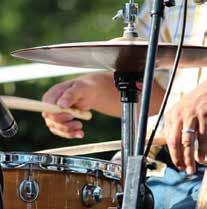
June 13 – September 5 // downtownslo.com




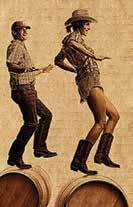
Enjoy Barrels in the Plaza followed by a two-day passport to more than 20 wineries offering wine and food pairings, live entertainment, exclusive specials, wine tastings and more.
June 19 -22 // slowine.com


The Lakeside Wine Festival will feature 80 participating wineries, culinary creations by local chefs, artist showcases and live music. Proceeds will benefit Charles Paddock Zoo and local community projects.
June 28 // atascaderochamber.org
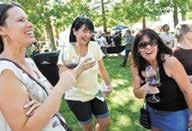
Since 1946, Blue’s Baseball has been a tradition of San Luis Obispo. This family-friendly setting offers plenty of games and activities for the kids, as well as a concession stand and beer truck. The fireworks show will begin immediately following the game.

July 3 // bluesbaseball.com

Billed as an epic outdoor experience on California’s Central Coast, the 2nd annual summer event expands to three days with camping, music, tastings and more.
July 11 - July 13 // sevensistersfest.com



Enjoy live, outdoor Shakespeare and other classic plays on the Central Coast of California. Grab low-back chairs, blankets, family and friends, pack a picnic and take in live theatre under the stars.

July 10 - August 2 centralcoastshakespeare.org
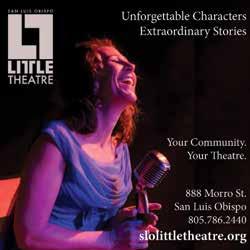
Brian Waterbury Memorial Rock to Pier Fun Run and Rock’n Around the Pier Half Marathon is open to participants of all ages and abilities.
July 12 - 13 // leaguelineup.com/rock2pier
This summer, thousands of attendees will enjoy chamber music, orchestra and educational concerts led by Scott Yoo in historic, spectacular venues and in the county’s many scenic wineries, parks and gardens.
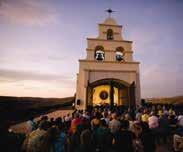
July 17 – 27 // festivalmozaic.com


